
This Is How They Tell Me the World Ends: The Cyberweapons Arms Race
by
Nicole Perlroth
Published 9 Feb 2021
James, here, here world, destroying the, here, here World Trade Center bombing, here Wray, Christopher, here Xi Jinping, here, here, here Yahoo, here, here, here, here, here, here Yanukovych, Viktor, here Yasinsky, Oleksii, here YouTube, here al-Zawahiri, Ayman, here Zelensky, Volodymyr, here Zemlin, Jim, here zero-click exploits, here zero-day brokers, here, here, here, here, here zero-day bug market, here zero-day bugs identifying and eliminating, here registering, here underground market, here zero-day buyers human rights offenders, here morality, here zero-day capability, NSA NSA (National Security Agency), here, here Zero-Day Charlie (Miller, Charlie), here, here, here zero-day espionage, here, here, here, here zero-day exploits accuracy of, here, here Chinese clients, here copyright protections, here customers, here encryption piercing, here life span, here, here Microsoft Windows, here NSA, online posting of, here, here, here, here, here outsourcing, here patents, here power of, here prices paid for, here putting people at risk, here sold to government agencies, here timing, here, here weaponizing, here zero-day hunters, here zero-day market accountability, here beginnings, here buyers, here commoditization of, here controlling the, here deal-making structure, trust in the, here Desautels, Adriel (Cyanide/Simon Smith), here early days, here ethics, here, here, here, here exposing the, here government agencies, here government duplication of effort, here government interference, here inefficiencies, here morality, here, here, here, here morality in the, here, here, here, here, here, here morality of the, here NSA, here NSA budget, here outsourcing in the, here, here prices, here, here, here, here, here, here, here, here, here, here, here, here, here, here, here profit margins, here regulating the, here, here secrecy in the, here, here, here, here, here, here, here trust in the, here underground, here U.S. control over, here, here U.S. responsibility for, here, here valuation, here VRL (Vulnerability Research Labs), here zero-day market customers foreign buyers and sellers, here, here foreign governments, here, here government agencies, here, here, here, here, here security companies, here United States, here U.S. government customers, here U.S. in the, here zero-days (0 days) capabilities of, here, here defined, here life span, here used for physical harm, here, here, here zero-day stockpile NSA, here, here, here, here, here, here, here, here U.S., here, here, here, here Zerodium, here, here, here Zfone, here Zhang Yesui, here Zhengfei, Ren, here Zhou Yongkang, here Zimmermann, Phil, here Zork subversion, here Zott’s (Alpine Inn Beer Garden), here Zuckerberg, Mark, here, here, here A NOTE ON THE AUTHOR NICOLE PERLROTH is a staff writer at the New York Times, where she covers cybersecurity and digital espionage.
…
As much as I attempted to disguise the gravity of the question with a forkful of food, I wasn’t fooling anyone. The first rule of the zero-day market was: Nobody talks about the zero-day market. The second rule of the zero-day market was: Nobody talks about the zero-day market. I’d posed this question many times, and I knew it was the one question nobody in his business would answer. The Luigis and Donatos of the world had rationalized their trade long ago. If companies like Microsoft didn’t want them finding zero-day bugs in their software, they shouldn’t have written vulnerable code in the first place. Zero-days were critical to national intelligence gathering, and only becoming more so as encryption shrouded the world’s communications in secrecy.
…
If efficient markets require high levels of transparency and free flows of information, then the zero-day market was just about the least efficient model you could imagine. Sellers were sworn to never speak a word about their zero-day sale. Without data, it was impossible to know whether they had achieved a fair price. And it was often impossible for sellers to find buyers without cold-calling multiple interested parties. If they described their zero-day or handed it over for evaluation, a buyer might simply feign disinterest and use it anyway. The time lag between a hacker’s zero-day demo and when he got paid was brutally long. Zero-days took weeks, if not months, to vet—all the more time for the vulnerability to be found and patched.
Countdown to Zero Day: Stuxnet and the Launch of the World's First Digital Weapon
by
Kim Zetter
Published 11 Nov 2014
They worked on it some more on Sunday and by the end of the weekend, they’d uncovered an astonishing three zero-day exploits. These, plus the .LNK exploit already discovered, made four zero-day exploits in a single attack.1 This was crazy, they thought. One zero day was bad enough. Two was overkill. But four? Who did that? And why? You were just burning through valuable zero days at that point. A top-notch zero-day bug and exploit could sell for $50,000 or more on the criminal black market, even twice that amount on the closed-door gray market that sold zero-day exploits to government cyber armies and spies. Either the attackers had an unlimited supply of zero days at their disposal and didn’t care if they lost a handful or more, or they were really desperate and had a really good reason to topload their malware with spreading power to make certain it reached its target.
…
But when it comes to the company, he’s equally close-mouthed—he won’t say how many employees he has, just that the company is small, or reveal their last names. VUPEN’s researchers devote all their time to finding zero-day vulnerabilities and developing exploits—both for already-known vulnerabilities as well as for zero days. Bekrar won’t say how many exploits they’ve sold since they began this part of their business, but says they discover hundreds of zero days a year. “We have zero days for everything,” he says. “We have almost everything for every operating system, for every browser, for every application if you want.” How much of Bekrar’s boasting is true and how much is strategic marketing is unclear, but whatever the case, his tactics seem to be working.
…
The conference is sponsored by the Department of Homeland Security. 39 Author interview, November 2011. 40 Joseph Menn, “Special Report: US Cyberwar Strategy Stokes Fear of Blowback,” Reuters, May 10, 2013, available at reuters.com/article/2013/05/10/us-usa-cyberweapons-specialreport-idUSBRE9490EL20130510. 41 See chapter 6 for previous mention of how these two vulnerabilities had already been discovered by others before Stuxnet’s authors used them in their attack. 42 Summer Lemon, “Average Zero-Day Bug Has 348-Day Lifespan, Exec Says,” IDG News Service, July 9, 2007, available at computerworld.com/s/article/9026598/Average_zero_day_bug_has_348_day_lifespan_exec_says. 43 Robert Lemos, “Zero-Day Attacks Long-Lived, Presage Mass Exploitation,” Dark Reading, October 18, 2012, available at darkreading.com/vulnerabilities—threats/zero-day-attacks-long-lived-presage-mass-exploitation/d/d-id/1138557. The research was conducted by Symantec. 44 Pennington, Industrial Control Systems–Joint Working Group Conference, 2011. 45 Michael Riley, “U.S.

@War: The Rise of the Military-Internet Complex
by
Shane Harris
Published 14 Sep 2014
For the past two decades, NSA analysts have been scouring the world’s software, hardware, and networking equipment looking for vulnerabilities for which it can craft computer attack methods known as zero day exploits, so called because they take advantage of previously unknown flaws for which no defense has been built. (The target has had “zero days” to prepare for the attack.) A zero day is the most effective cyber weapon. It provides the element of surprise, which is the ultimate advantage in battle. The zero day exploit is bespoke, tailor-made to use against a specific vulnerability. And because that defenseless point in a system is likely to be patched as soon as the target realizes he’s been hit with a zero day, it may be used only once. Zero day attacks are especially hard to design because unknown vulnerabilities are hard to find.
…
Raytheon and Harris Corporation are two major players in the zero day market. They also design traditional weapons systems for the military and are two of the best-established and largest Pentagon contractors. Their ties to the military and to the NSA are deep and long-standing. Also collecting and selling zero days are smaller boutique firms, a number of which are run by former military officers or intelligence officials. Once the middlemen have the zero days, they sell them to their customer—the NSA. But the supply chain begins with the hacker. To be a good zero day hunter, a hacker has to put himself in the original programmer’s shoes and find the flaws in his design.
…
To be sure, the NSA does use knowledge of zero day exploits to plug holes in technology that it’s using or that might be deployed within the military or intelligence community. But it doesn’t warn the wider world—that would render the zero day exploit less effective, possibly even useless. One of the agency’s eventual targets in China or Iran might be tipped off if the NSA alerted technology companies to flaws in their technology. But in the shadowy zero day market, there are no guarantees that the NSA is always buying exclusive knowledge about zero days. One controversial vendor, the French company Vupen, sells the same zero day vulnerability information and exploits to attack them to multiple clients, including government agencies in different countries.
Sandworm: A New Era of Cyberwar and the Hunt for the Kremlin's Most Dangerous Hackers
by
Andy Greenberg
Published 5 Nov 2019
When Hultquist had arrived at his desk earlier that day in a far-better-lit office, one with actual windows on the opposite side of the iSight building, he’d opened an email from one of his iSight colleagues in the company’s Ukraine satellite operation. Inside, he found a gift: The Kiev-based staff believed they might have gotten their hands on a zero-day vulnerability. A zero day, in hacker jargon, is a secret security flaw in software, one that the company who created and maintains the software’s code doesn’t know about. The name comes from the fact that the company has had “zero days” to respond and push out a patch to protect users. A powerful zero day, particularly one that allows a hacker to break out of the confines of the software application where the bug is found and begin to execute their own code on a target computer, can serve as a kind of global skeleton key—a free pass to gain entrance to any machine that runs that vulnerable software, anywhere in the world where the victim is connected to the internet.
…
Erickson, the reverse engineer who first handled the zero day in iSight’s black room, remembers his work disassembling and defusing the attack as a somewhat rare, fascinating, but utterly impersonal event. In his career, he’d dealt with only a handful of real zero days found in the wild. But he’d analyzed thousands upon thousands of other malware samples and had learned to think of them as specimens for study without considering the author behind them—the human who had rigged together their devious machinery. “It was just some unknown guy and some unknown thing I hadn’t seen before,” he said. But zero days do have authors. And when Erickson had first begun to pull apart this one in his blacked-out workshop that morning, he hadn’t simply been studying some naturally occurring, inanimate puzzle.
…
A malicious Word attachment had silently run a script known as a macro, a little program hidden inside the document, on the victims’ machines. The effect was the same as the zero-day technique iSight had first found Sandworm using in its infected Microsoft PowerPoint documents in 2014, but with a new trade-off: Without the zero day, the victims had to be tricked into clicking a button to allow the script to run. Until they clicked, the document would appear to be missing content or broken, so most users unthinkingly clicked to load it. But by using a simpler replacement for their zero-day technique, the hackers had been able to operate much less conspicuously, and their attack didn’t depend on keeping a rare vulnerability secret from Microsoft.

Click Here to Kill Everybody: Security and Survival in a Hyper-Connected World
by
Bruce Schneier
Published 3 Sep 2018
HOW GOVERNMENTS CAN PRIORITIZE DEFENSE OVER OFFENSE 160“defense dominant” strategy: Jason Healey (Jan 2017), “A nonstate strategy for saving cyberspace,” Atlantic Council Strategy Paper No. 8, Atlantic Council, http://www.atlanticcouncil.org/images/publications/AC_StrategyPapers_No8_Saving_Cyberspace_WEB.pdf. 160The NSA has two missions: John Ferris (1 Mar 2010), “Signals intelligence in war and power politics, 1914–2010,” in The Oxford Handbook of National Security Intelligence, Oxford, http://www.oxfordhandbooks.com/view/10.1093/oxfordhb/9780195375886.001.0001/oxfordhb-9780195375886-e-0010. 162to criminals on the black market: Dancho Danchev (2 Nov 2008), “Black market for zero day vulnerabilities still thriving,” ZDNet, http://www.zdnet.com/blog/security/black-market-for-zero-day-vulnerabilities-still-thriving/2108. Dan Patterson (9 Jan 2017), “Gallery: The top zero day Dark Web markets,” TechRepublic, https://www.techrepublic.com/pictures/gallery-the-top-zero-day-dark-web-markets. 162and to governments: Andy Greenberg (21 Mar 2012), “Meet the hackers who sell spies the tools to crack your PC (and get paid six-figure fees),” Forbes, http://www.forbes.com/sites/andygreenberg/2012/03/21/meet-the-hackers-who-sell-spies-the-tools-to-crack-your-pc-and-get-paid-six-figure-fees. 162Companies like Azimuth sell: Joseph Cox and Lorenzo Franceschi-Bicchierai (7 Feb 2018), “How a tiny startup became the most important hacking shop you’ve never heard of,” Vice Motherboard, https://motherboard.vice.com/en_us/article/8xdayg/iphone-zero-days-inside-azimuth-security. 162And while vendors offer bounties: Adam Segal (19 Sep 2016), “Using incentives to shape the zero-day market,” Council on Foreign Relations, https://www.cfr.org/report/using-incentives-shape-zero-day-market. 162the not-for-profit Tor Project: Tor Project (last updated 20 Sep 2017), “Policy [re Tor bug bounties],” Hacker One, Inc., https://hackerone.com/torproject. 162the cyberweapons manufacturer Zerodium: Zerodium (13 Sep 2017; expired 1 Dec 2017), “Tor browser zero-day exploits bounty (expired),” https://zerodium.com/tor.html. 163“Every offensive weapon is”: Jack Goldsmith (12 Apr 2014), “Cyber paradox: Every offensive weapon is a (potential) chink in our defense—and vice versa,” Lawfare, http://www.lawfareblog.com/2014/04/cyber-paradox-every-offensive-weapon-is-a-potential-chink-in-our-defense-and-vice-versa. 163Many people have weighed in: Joel Brenner (14 Apr 2014), “The policy tension on zero-days will not go away,” Lawfare, http://www.lawfareblog.com/2014/04/the-policy-tension-on-zero-days-will-not-go-away. 163Activist and author Cory Doctorow: Cory Doctorow (11 Mar 2014), “If GCHQ wants to improve national security it must fix our technology,” Guardian, http://www.theguardian.com/technology/2014/mar/11/gchq-national-security-technology. 163I have said similar things: Bruce Schneier (20 Feb 2014), “It’s time to break up the NSA,” CNN, http://edition.cnn.com/2014/02/20/opinion/schneier-nsa-too-big/index.html. 163Computer security expert Dan Geer: Dan Geer (3 Apr 2013), “Three policies,” http://geer.tinho.net/three.policies.2013Apr03Wed.PDF. 163Both Microsoft’s Brad Smith: Brad Smith (14 May 2017), “The need for urgent collective action to keep people safe online: Lessons from last week’s cyberattack,” Microsoft on the Issues, https://blogs.microsoft.com/on-the-issues/2017/05/14/need-urgent-collective-action-keep-people-safe-online-lessons-last-weeks-cyberattack. 163and Mozilla: Heather West (7 Mar 2017), “Mozilla statement on CIA/WikiLeaks,” Open Policy & Advocacy, https://blog.mozilla.org/netpolicy/2017/03/07/mozilla-statement-on-cia-wikileaks.
…
Dan Patterson (9 Jan 2017), “Gallery: The top zero day Dark Web markets,” TechRepublic, https://www.techrepublic.com/pictures/gallery-the-top-zero-day-dark-web-markets. 162and to governments: Andy Greenberg (21 Mar 2012), “Meet the hackers who sell spies the tools to crack your PC (and get paid six-figure fees),” Forbes, http://www.forbes.com/sites/andygreenberg/2012/03/21/meet-the-hackers-who-sell-spies-the-tools-to-crack-your-pc-and-get-paid-six-figure-fees. 162Companies like Azimuth sell: Joseph Cox and Lorenzo Franceschi-Bicchierai (7 Feb 2018), “How a tiny startup became the most important hacking shop you’ve never heard of,” Vice Motherboard, https://motherboard.vice.com/en_us/article/8xdayg/iphone-zero-days-inside-azimuth-security. 162And while vendors offer bounties: Adam Segal (19 Sep 2016), “Using incentives to shape the zero-day market,” Council on Foreign Relations, https://www.cfr.org/report/using-incentives-shape-zero-day-market. 162the not-for-profit Tor Project: Tor Project (last updated 20 Sep 2017), “Policy [re Tor bug bounties],” Hacker One, Inc., https://hackerone.com/torproject. 162the cyberweapons manufacturer Zerodium: Zerodium (13 Sep 2017; expired 1 Dec 2017), “Tor browser zero-day exploits bounty (expired),” https://zerodium.com/tor.html. 163“Every offensive weapon is”: Jack Goldsmith (12 Apr 2014), “Cyber paradox: Every offensive weapon is a (potential) chink in our defense—and vice versa,” Lawfare, http://www.lawfareblog.com/2014/04/cyber-paradox-every-offensive-weapon-is-a-potential-chink-in-our-defense-and-vice-versa. 163Many people have weighed in: Joel Brenner (14 Apr 2014), “The policy tension on zero-days will not go away,” Lawfare, http://www.lawfareblog.com/2014/04/the-policy-tension-on-zero-days-will-not-go-away. 163Activist and author Cory Doctorow: Cory Doctorow (11 Mar 2014), “If GCHQ wants to improve national security it must fix our technology,” Guardian, http://www.theguardian.com/technology/2014/mar/11/gchq-national-security-technology. 163I have said similar things: Bruce Schneier (20 Feb 2014), “It’s time to break up the NSA,” CNN, http://edition.cnn.com/2014/02/20/opinion/schneier-nsa-too-big/index.html. 163Computer security expert Dan Geer: Dan Geer (3 Apr 2013), “Three policies,” http://geer.tinho.net/three.policies.2013Apr03Wed.PDF. 163Both Microsoft’s Brad Smith: Brad Smith (14 May 2017), “The need for urgent collective action to keep people safe online: Lessons from last week’s cyberattack,” Microsoft on the Issues, https://blogs.microsoft.com/on-the-issues/2017/05/14/need-urgent-collective-action-keep-people-safe-online-lessons-last-weeks-cyberattack. 163and Mozilla: Heather West (7 Mar 2017), “Mozilla statement on CIA/WikiLeaks,” Open Policy & Advocacy, https://blog.mozilla.org/netpolicy/2017/03/07/mozilla-statement-on-cia-wikileaks.
…
AUTHENTICATION IS GETTING HARDER, AND CREDENTIAL STEALING IS GETTING EASIER In 2016, Rob Joyce, then the head of the NSA’s since-renamed Tailored Access Operations (TAO) group—basically, the country’s chief hacker—gave a rare public talk. In a nutshell, he said that zero-day vulnerabilities are overrated, and credential stealing is how he gets into networks. He’s right. As bad as software vulnerabilities are, the most common way hackers break into networks is by abusing the authentication process. They steal passwords, set up man-in-the-middle attacks to piggyback on legitimate log-ins, or masquerade as authorized users. Credential stealing doesn’t require finding a zero-day or an unpatched vulnerability, plus there’s less chance of discovery, and it gives the attacker more flexibility in technique.

Dark Territory: The Secret History of Cyber War
by
Fred Kaplan
Published 1 Mar 2016
As this race between hacking and patching intensified, practitioners of both arts, worldwide, came to place an enormous value on “zero-day vulnerabilities”—holes that no one had yet discovered, much less patched. In the ensuing decade, private companies would spring up that, in some cases, made small fortunes by finding zero-day vulnerabilities and selling their discoveries to governments, spies, and criminals of disparate motives and nationalities. This hunt for zero-days preoccupied some of the craftiest mathematical minds in the NSA and other cyber outfits, in the United States and abroad. Once, in the late 1990s, Richard Bejtlich, a computer network defense analyst at Kelly Air Force Base discovered a zero-day vulnerability—a rare find—in a router made by Cisco.
…
Another recommendation was to bar the government from doing anything to “subvert, undermine, weaken, or make vulnerable generally available commercial software.” Specifically, if NSA analysts discovered a zero-day exploit—a vulnerability that no one had yet discovered—they should be required to patch the hole at once, except in “rare instances,” when the government could “briefly authorize” using zero-days “for high-priority intelligence collection,” though, even then, they could do so only after approval by a “senior interagency review involving all appropriate departments.” This was one of the group’s more esoteric, but also radical, recommendations. Zero-day vulnerabilities were the gemstones of modern SIGINT, prized commodities that the agency trained its top sleuths—and sometimes paid private hackers—to unearth and exploit.
…
No U.S. newspaper or magazine reprinted the list (the reporters and editors working the story considered it genuinely damaging to national security), but Der Spiegel did, in its entirety (Jacob Appelbaum, Judith Horchert, and Christian Stöcker, “Shopping for Spy Gear: Catalog Advertises NSA Toolbox,” Dec. 29, 2013), and computer security analyst Bruce Schneier subsequently reprinted each item, one day at a time, on his blog. As hackers and spies discovered vulnerabilities: “Inside TAO.” In the ensuing decade, private companies: For more on zero-day exploits, see Neal Ungerleider, “How Spies, Hackers, and the Government Bolster a Booming Software Exploit Market,” Fast Company, May 1, 2013; Nicole Perlroth and David E. Sanger, “Nations Buying as Hackers Sell Flaws in Computer Code,” New York Times, July 13, 2013; Kim Zetter, Countdown to Zero Day: Stuxnet and the Launch of the World’s First Digital Weapon (New York: Crown, 2014). Specific stories come from interviews. During the first few months of Bush’s term: Richard A.
Cult of the Dead Cow: How the Original Hacking Supergroup Might Just Save the World
by
Joseph Menn
Published 3 Jun 2019
As the American government ramped up its spying efforts after 9/11, it needed to discover new vulnerabilities that would enable digital break-ins. In the trade, these were often called “zero-days,” because the software maker and its customers had zero days of warning that they needed to fix the flaw. A ten-day flaw is less dangerous because companies have more time to develop and distribute a patch, and customers are more likely to apply it. The increased demand for zero-days drove up prices. After the dollars multiplied, hackers who had the strongest skills in finding bugs that others could not—on their own or with specialized tools—could now make a living doing nothing but this.
…
“Some operatives installed keyloggers”: This was reported in Sean Naylor’s recent history of JSOC, Relentless Strike (New York: St. Martin’s Press, 2015). “Others had similar experiences”: Thieme provided me with the emails from veterans. “The first mainstream articles on the zero-day business”: Andy Greenberg profiled the @stake veteran who calls himself the Grugq in “Shopping for Zero-Days: A Price List for Hackers’ Secret Software Exploits,” Forbes, March 23, 2012, www.forbes.com/sites/andygreenberg/2012/03/23/shopping-for-zero-days-an-price-list-for-hackers-secret-software-exploits/. I later wrote a deeper story and a sidebar for Reuters: “Special Report: U.S. Cyberwar Strategy Stokes Fear of Blowback,” Reuters, May 10, 2013, www.reuters.com/article/us-usa-cyberweapons-specialreport/special-report-u-s-cyberwar-strategy-stokes-fear-of-blowback-idUSBRE 9490EL20130510, and “Booming ‘Zero-Day’ Trade Has Washington Cyber Experts Worried,” Reuters, May 10, 2013, www.reuters.com/article/us-usa-cyberweapons-policy/booming-zero-day-trade-has-washington-cyber-experts-worried-idUSBRE9490EQ20130510.
…
The brokers’ clients did not want attention being paid to their supply chain. And the majority of hackers did not want to announce themselves as mercenaries or paint a target on themselves for other hackers or governments that might be interested in hacking them for an easy zero-day harvest. So the gray trade grew, driven by useful rumors at Def Con and elsewhere, and stayed out of public sight for a decade. The first mainstream articles on the zero-day business appeared not long before Edward Snowden disclosed that it was a fundamental part of US government practice, in 2013. As offensive capabilities boomed, defense floundered. Firms like @stake tried to protect the biggest companies and, more importantly, get the biggest software makers to improve their products.
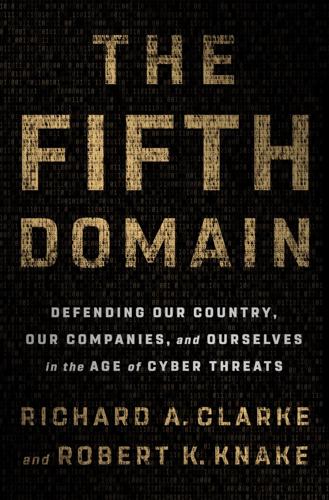
The Fifth Domain: Defending Our Country, Our Companies, and Ourselves in the Age of Cyber Threats
by
Richard A. Clarke
and
Robert K. Knake
Published 15 Jul 2019
Government regarding attacks that exploit a previously unknown vulnerability in a computer application or system. These are often called ‘Zero Day’ attacks because developers have had zero days to address and patch the vulnerability. U.S. policy should generally move to ensure that Zero Days are quickly blocked, so that the underlying vulnerabilities are patched on U.S. Government and other networks. In rare instances, U.S. policy may briefly authorize using a Zero Day for high priority intelligence collection, following senior, interagency review involving all appropriate departments.” See “Liberty and Security in a Changing World,” Report and Recommendations of the President’s Review Group on Intelligence and Communications Technologies, December 12, 2013.
…
Avoiding these technologies could be as simple as making a single change to the file so that it no longer matched the bad file. Now, Aitel is worried that the superweapons of his craft are increasingly getting discovered. As we’ve seen, a zero day is a vulnerability that is not known to defenders and therefore has yet to be patched. Aitel, from an offensive perspective, is concerned that security firms are actually finding zero day attacks with increasing regularity, to the point that detection of zero days is becoming commoditized. “Microsoft’s Advanced Threat Detection, CrowdStrike, Kaspersky, the new FireEye stuff, all that stuff actually works and that is a huge change,” Aitel says.
…
There was a belief that failure to modify such software in time would result in widespread failure of software-controlled devices and machinery at 12:01 A.M. of 01/01/2000. Zero-day vulnerability: A software attack tool that has never been used before and for which, therefore, no defense currently exists. A zero-day attack tool is an exploit that utilizes a previously unused vulnerability in software or hardware. Zero Days is also the name of a 2016 documentary film about Stuxnet, directed by Alex Gibney. Acknowledgments and Disclosures As we note in the text, the cyber workforce is stretched thin.
Cybersecurity: What Everyone Needs to Know
by
P. W. Singer
and
Allan Friedman
Published 3 Jan 2014
EXERCISE IS GOOD FOR YOU: HOW CAN WE BETTER PREPARE FOR CYBER INCIDENTS? malicious computer code Dan Goodin, “At Facebook, Zero-Day Exploits, Backdoor Code, Bring War Games Drill to Life,” Ars Technica, February 10, 2013, http://arstechnica.com/security/2013/02/at-facebook-zero-day-exploits-backdoor-code-bring-war-games-drill-to-life/. no major damage Sean Gallagher, “Facebook Computers Compromised by Zero-Day Java Exploit,” Ars Technica, February 15, 2013, http://arstechnica.com/security/2013/02/facebook-computers-compromised-by-zero-day-java-exploit/. tried to harm Facebook Dennis Fisher, “How Facebook Prepared to Be Hacked,” Threatpost, March 8, 2013, http://threatpost.com/en_us/blogs/how-facebook-prepared-be-hacked-030813.
…
The more he and his team explored it, the more interested they became. It was a wonderfully complex piece of malware like none the world had ever seen. It had at least four new “zero days” (previously unknown vulnerabilities), utilized digital signatures with the private keys of two certificates stolen from separate well-known companies, and worked on all Windows operating systems down to the decade-old Windows 95 edition. The number of new zero days particularly stood out. Hackers prize zero days and don’t like to reveal them when they don’t have to. To use four at once was unprecedented and almost illogical given that one new open door is enough.
…
Twice in six months sophisticated attackers were able to gain access to the production code that runs Facebook’s website, used by over a billion people around the world. The first time, a Facebook engineer’s computer was compromised by an unpatched, zero-day exploit. This enabled the attacker to “push” their own malicious computer code into the “live build” that runs the website. The second time, in early 2013, several engineers’ computers were compromised after visiting a website that launched a zero-day exploit on its victims. But this time, the attacker was unable to get inside sensitive systems, and could cause no major damage. The reason these two attacks caused such differing effects lies in their origin.

Data and Goliath: The Hidden Battles to Collect Your Data and Control Your World
by
Bruce Schneier
Published 2 Mar 2015
discoverers can sell to criminals: Dancho Danchev (2 Nov 2008), “Black market for zero day vulnerabilities still thriving,” ZDNet, http://www.zdnet.com/blog/security/black-market-for-zero-day-vulnerabilities-still-thriving/2108. Undiscovered zero-day vulnerabilities: Here is the most important research into that question. Eric Rescorla (7 Feb 2005), “Is finding security holes a good idea?” RTFM, Inc., http://www.rtfm.com/bugrate.pdf. Sandy Clark et al. (6–10 Dec 2010), “Familiarity breeds contempt: The honeymoon effect and the role of legacy code in zero-day vulnerabilities,” 26th Annual Computer Security Applications Conference, Austin, Texas, http://dl.acm.org/citation.cfm?id=1920299. Andy Ozment and Stuart E.
…
the White House tried to clarify: Michael Daniel (28 Apr 2014), “Heartbleed: Understanding when we disclose cyber vulnerabilities,” White House Blog, http://www.whitehouse.gov/blog/2014/04/28/heartbleed-understanding-when-we-disclose-cyber-vulnerabilities. Stuxnet, used four zero-days: Ryan Naraine (14 Sep 2010), “Stuxnet attackers used 4 Windows zero-day exploits,” ZDNet, http://www.zdnet.com/blog/security/stuxnet-attackers-used-4-windows-zero-day-exploits/7347. agency jargon NOBUS: Andrea Peterson (4 Oct 2013), “Why everyone is left less secure when the NSA doesn’t help fix security flaws,” Washington Post, http://www.washingtonpost.com/blogs/the-switch/wp/2013/10/04/why-everyone-is-left-less-secure-when-the-nsa-doesnt-help-fix-security-flaws.
…
Thompson II (5 Jun 2014), “The Fourth Amendment third-party doctrine,” Congressional Research Service, http://fas.org/sgp/crs/misc/R43586.pdf. also hoarding vulnerabilities: In 2014, the Russians used a zero-day vulnerability in Windows to spy on both NATO and the Ukrainian government. Ellen Nakashima (13 Oct 2014), “Russian hackers use ‘zero-day’ to hack NATO, Ukraine in cyber-spy campaign,” Washington Post, http://www.washingtonpost.com/world/national-security/russian-hackers-use-zero-day-to-hack-nato-ukraine-in-cyber-spy-campaign/2014/10/13/f2452976-52f9-11e4-892e-602188e70e9c_story.html. Some people believe the NSA: Cory Doctorow (11 Mar 2014), “If GCHQ wants to improve national security it must fix our technology,” Guardian, http://www.theguardian.com/technology/2014/mar/11/gchq-national-security-technology.

Black Code: Inside the Battle for Cyberspace
by
Ronald J. Deibert
Published 13 May 2013
“It’s a lot more fun to fight the adversary than to guard against him,” Mandiant company founder Kevin Mandia told NPR, citing another industry expert who says that “there are dozens, if not hundreds, of service providers doing similar things to Mandiant.” One extremely lucrative part of this market involves the sale of fresh “exploitations” or undiscovered computer vulnerabilities not yet detected by the antivirus industry, like Gamma’s Zero Day. A 2012 Forbes magazine investigation acquired a price list of zero-day vulnerabilities, offering another peek inside this otherwise closed industry. Want a fresh exploit that will target Adobe? That will cost anywhere from $5,000 to $30,000. Mac OS X? $20,000 to $50,000. Android? $30,000 to $60,000. One exploit targeting Apple’s iOS system was reportedly sold to a U.S. agency for $250,000.
…
We the People of … Facebook 7. Policing Cyberspace: Is There an “Other Request” on the Line? 8. Meet Koobface: A Cyber Crime Snapshot 9. Digitally Armed and Dangerous 10. Fanning the Flames of Cyber Warfare 11. Stuxnet and the Argument for Clean War 12. The Internet Is Officially Dead 13. A Zero Day No More 14. Anonymous: Expect Us 15. Towards Distributed Security and Stewardship in Cyberspace Not an Epilogue Notes Acknowledgements PREFACE It always takes long to come to what you have to say, you have to sweep this stretch of land up around your feet and point to the signs, pleat whole histories with pins in your mouth and guess at the fall of words.
…
In the early days, cyber crime was primarily a loner’s calling, an annoying but affordable by-product of an open Internet. Today, the loners find each other, network together, and professionalize their activities. Underground forums have emerged in the dark recesses of the Internet where specialized tools and techniques are now bought, sold, and traded. Malicious software packages – known as “Ødays” or “zero days,” because antivirus companies have no known protections against them – are now as readily available as songs on iTunes. “Botnet herders” – individuals who control tens of thousands of compromised computers – market their wares in underground auctions. Stolen credit cards and email addresses are sold, bought, and traded like candy.

Future Crimes: Everything Is Connected, Everyone Is Vulnerable and What We Can Do About It
by
Marc Goodman
Published 24 Feb 2015
Though millions around the world rely on these tools, it’s pretty clear the antivirus era is over. One of the reasons it is proving difficult to counter the wide variety of technological threats in our lives today is that there has been a burgeoning increase in the number of so-called zero-day attacks. A zero-day exploit takes advantage of a previously unknown vulnerability in a computer application that developers and security staff have not had time to address. Rather than proactively looking for these vulnerabilities themselves, antivirus software companies generally only consider known data points.
…
As we saw with the Stuxnet attack against the Iranian nuclear enrichment site at Natanz, such operations can take years of planning and cost millions of dollars. Fortunately for those without the time and budget to devise their own cyber weapons, there is a vast shadowy black market where spies, soldiers, thieves, and hacktivists can shop for so-called zero-day exploits. As mentioned previously, these zero-day bugs have not yet been discovered by software and antivirus companies and thus handily defeat common security and firewall measures without sounding an alarm. In the old days, hackers used to hold on to these exploits for their personal use or attempt to sell them to software giants such as Microsoft, Yahoo!
…
Companies such as Vupen in France, Netragard in Massachusetts, Endgame of Georgia, Exodus Intelligence in Texas, and ReVuln in Malta are all heavily involved in selling offensive exploits to customers around the world. While some zero-day trafficking firms vet their clients, others will sell to anybody, from Crime, Inc. to notorious dictators, no questions asked. The result, as pointed out by the noted security researcher Tom Kellermann, is that now anybody can download a cyber Kalashnikov or cyber grenade from a myriad of sites. Many zero-day exploits enable particularly stealthy and sophisticated attacks against specific targets, giving rise to what security researchers have termed the advanced persistent threat, or APT.
The Hacker and the State: Cyber Attacks and the New Normal of Geopolitics
by
Ben Buchanan
Published 25 Feb 2020
For the first reporting of this test, see William Broad, John Markoff, and David Sanger, “Israeli Test on Worm Called Crucial in Iran Nuclear Delay,” New York Times, January 15, 2011. 10. Sanger, Confront and Conceal, 197. 11. For the first reporting of this order, see Sanger, Confront and Conceal, ch. 8. 12. For a good discussion of this propagation, see Zetter, Countdown to Zero Day, 91. See also Zetter and Modderkolk, “Revealed.” 13. Zetter, Countdown to Zero Day, 97. For more detailed technical analysis of this point, see Kaspersky Lab, “Stuxnet: Victims Zero,” November 18, 2014. Note that not all five contractors were used to spread each version of Stuxnet. 14. The two command-and-control sites used the domain names mypremierfutbol.com and todaysfutbol.com. 15.
…
Brian Krebs, “Experts Warn of New Windows Shortcut Flaw,” Krebs on Security, July 15, 2010. 29. One of these companies was Siemens, which made the industrial controllers that Stuxnet targeted. But after a July statement, the firm was curiously silent. Zetter, Countdown to Zero Day, 168. 30. For a good discussion of Stuxnet’s relative size, see Zetter, Countdown to Zero Day, 20. 31. Symantec posted a series of blog posts throughout the summer and fall of 2010 updating what it knew about Stuxnet. For an archived list of these posts as of early 2011, see “Security Response (Posts Tagged with W32.Stuxnet),” Symantec, January 20, 2011, https://web.archive.org/web/20110120133017/https://www.symantec.com/connect/symantec-blogs/security-response/11761/all/all/all/all. 32.
…
For an archived list of these posts as of early 2011, see “Security Response (Posts Tagged with W32.Stuxnet),” Symantec, January 20, 2011, https://web.archive.org/web/20110120133017/https://www.symantec.com/connect/symantec-blogs/security-response/11761/all/all/all/all. 32. Emphasis in the original. Kim Zetter, “How Digital Detectives Deciphered Stuxnet, the Most Menacing Malware in History,” Wired, July 11, 2011. 33. Zetter, Countdown to Zero Day, 173. 34. Zetter, Countdown to Zero Day, 177. 35. Ralph Langner, “Stuxnet Is a Directed Attack: ‘Hack of the Century,’ ” Langner Group, September 13, 2010. 36. Ralph Langner, “Stuxnet Logbook, Sep 16 2010, 1200 Hours MESZ,” Langner Group, September 16, 2010. 37. Kaspersky Global Research & Analysis Team (GReAT), “What Was That Wiper Thing?”

Dawn of the Code War: America's Battle Against Russia, China, and the Rising Global Cyber Threat
by
John P. Carlin
and
Garrett M. Graff
Published 15 Oct 2018
In January 2010, VeriSign’s iDefense publicly accused the Chinese government of stealing the source code—the crown jewels of a tech company, the secret back-end recipe for how a website works—for at least 33 companies, including the tech giant Google, as well as Yahoo, Symantec, Northrop Grumman, and Dow Chemical.13* The hackers had relied upon previously unknown vulnerabilities in both Microsoft’s Internet Explorer and Adobe’s PDF reader—so-called zero-day exploits—to deliver malware onto targeted computers.14 Zero-day exploits represent the crown jewels in the cyber realm, incredibly rare and valuable commodities to both regular hackers and, especially, nation-states, which rely on zero days to conduct high-level espionage and prepare military attacks on unsuspecting targets. They were not used routinely, but instead were hoarded and stockpiled for special access or emergency situations. Tech companies were often willing to pay big money privately for zero days, as were governments interested in using them for future hacking.
…
Inside the US government, there were often intense philosophical discussions about when and whether companies should be made aware of zero-day vulnerabilities to issue software or hardware patches; often the FBI or DHS preferred to let companies know quickly, to help them harden their systems, while intelligence agencies might prefer to hold on to them to exploit in their own work. This debate, which continues to this day, led to a formal system known as the VEP, the Vulnerabilities Equities Process, which brought together government agencies to weigh in on zero days to industry. The high value of a zero day meant that spotting one in the wild was exceedingly rare—upward of 90 percent of hacking efforts didn’t involve exploiting any unique vulnerabilities—which meant that someone had really wanted the information they were after if they were willing to burn one or more zero days on the attack.
…
In 2011, a team from the Republic of Georgia laid a trap for a hacker rummaging through its network: they hid an intriguing document, titled “Georgian-NATO agreement,” that actually contained malware of its own that, once exfiltrated and downloaded, allowed the Georgian team to turn on the hacker’s camera and photograph him sitting, wearing a yellow shirt, hunched over his computer examining his stolen take.20 In 2018, researchers announced that they’d been able to trace a particular attack to North Korea in part because the hacker had infected his own computer with his own malware. Similarly, most of the methods hackers use aren’t fancy so-called zero-day exploits, hidden and unknown flaws in software or hardware that can fetch top dollar in online marketplaces. In fact, little in the cyberworld relies on sophisticated black magic. Most hacks—even the most damaging ones—have come through relatively unsophisticated means exploiting obvious vulnerabilities: software patches that haven’t been installed, weak or default passwords protecting sensitive data, or “phishing” techniques where a user has clicked a nefarious link in an email and allowed hackers access to an account.

Reset
by
Ronald J. Deibert
Published 14 Aug 2020
“The Million Dollar Dissident: NSO Group’s iPhone Zero-Days used against a UAE Human Rights Defender,” Citizen Lab Research Report No. 78, University of Toronto. Retrieved from https://citizenlab.ca/2016/08/million-dollar-dissident-iphone-zero-day-nso-group-uae/ “Zero days” — or “open doors that the vendor does not know it should lock”: Lindsay, Restrained by design; Greenberg, A. (2012, March 23). Shopping for zero-days: A price list for hackers’ secret software exploits. Forbes; Meakins, J. (2019). A zero-sum game: The zero-day market in 2018. Journal of Cyber Policy, 4(1), 60–71; Zetter. Countdown to Zero Day. Throughout 2017 and 2018, we partnered with Mexican human rights investigators at organizations: Scott-Railton, J., Marczak, B., Anstis, S., Abdul Razzak, B., Crete-Nishihata, B., and Deibert, R.
…
Clicking on those links in a laboratory setting allowed us to infect an iPhone we controlled and inspect a copy of NSO Group’s custom Pegasus spyware. The spyware was extraordinarily sophisticated; it included exploits that took advantage of three separate flaws in Apple’s operating system that even Apple was unaware of at the time. (Known in the industry as “zero days” — or “open doors that the vendor does not know it should lock,” as University of Toronto professor Jon Lindsay put it — a single one of these exploitable software flaws in Apple products can fetch as much as $1 million for those who discover it.)215 After disclosing the vulnerabilities to Apple, which pushed out a security patch to more than one billion users, and publishing our report on the targeting of Mansoor, we reverse-engineered Pegasus and began scanning for and monitoring NSO’s infrastructure and government client base.
…
What goes for spyware is equally applicable to the broad range of insecurities introduced by governments into our communications ecosystem in the name of national security. For years, government military, intelligence, and law enforcement agencies have not only stockpiled knowledge of software bugs (“zero days”) as tools that could facilitate their investigations and other operations, they’ve also deliberately introduced such flaws into critical systems as “back doors” — a kind of insecurity by design.427 Very little is known about these practices, how extensive they are, and what criteria guide the decision making around them, because they are shrouded in secrecy.
Building Secure and Reliable Systems: Best Practices for Designing, Implementing, and Maintaining Systems
by
Heather Adkins
,
Betsy Beyer
,
Paul Blankinship
,
Ana Oprea
,
Piotr Lewandowski
and
Adam Stubblefield
Published 29 Mar 2020
In the context of short-term changes, we’ll focus on vulnerabilities where Google learned about the vulnerability on day zero. Although Google is often involved in embargoed vulnerability responses—for example, when developing patches—a short-term change for a zero-day vulnerability is common behavior for most organizations in the industry. Note Although zero-day vulnerabilities get a lot of attention (both externally and within the organization), they’re not necessarily the vulnerabilities that are most exploited by attackers. Before you tackle a same-day zero-day vulnerability response, make sure you’re patched for the “top hits” to cover critical vulnerabilities from recent years. When you discover a new vulnerability, triage it to determine its severity and impact.
…
In the following sections, we discuss three different time horizons for change and include examples to show what each has looked like at Google: A short-term change in reaction to a new security vulnerability A medium-term change, where new product adoption could happen gradually A long-term change for regulatory reasons, where Google had to build new systems in order to implement the change Short-Term Change: Zero-Day Vulnerability Newly discovered vulnerabilities often require short-term action. A zero-day vulnerability is one that is known by at least some attackers, but that hasn’t been disclosed publicly or discovered by the targeted infrastructure provider. Typically, a patch either isn’t available yet or hasn’t been widely applied. There are a variety of ways to find out about new vulnerabilities that might affect your environment, including regular code reviews, internal code scanning (see “Sanitize Your Code”), fuzzing (see “Fuzz Testing”), external scans like penetration tests and infrastructure scans, and bug bounty programs.
…
hardening with fixits, Testing programming language choice, Programming Language Choice resiliency for CA key material, Resiliency for the CA Key Material securing third-party/open source components, Securing Third-Party and Open Source Components testing, Testing certificate revocation (see explicit revocation mechanism) Certificate Signing Requests (CSRs), Programming Language Choice certification (security specialists), Certifications and Academia certification validity database, A centralized service to revoke certificates CFG (control-flow graph), Abstract Interpretation champions, IR team, Identify Team Members and Roles changebuilding a case for, Build a Case for Change picking your battles, Pick Your Battles reducing fear with risk-reduction mechanisms, Reduce Fear with Risk-Reduction Mechanisms-Reduce Fear with Risk-Reduction Mechanisms resistance to, Changing Culture Through Good Practice slowing down a change, Complications: When Plans Change change budget, A foothold for humans change, designing for, Design for a Changing Landscape-Conclusionarchitecture decisions to make changes easier, Architecture Decisions to Make Changes Easier-Example: Google’s frontend design best practices for designing your change, Designing Your Change complications: when plans change, Complications: When Plans Change containers, Use Containers factors influencing speed of change, Different Changes: Different Speeds, Different Timelines-Example: Increasing HTTPS usage Heartbleed security bug example, Example: Growing Scope—Heartbleed keeping dependencies up to date, Keep Dependencies Up to Date and Rebuild Frequently long-term change: external demand, Long-Term Change: External Demand-Example: Increasing HTTPS usage medium-term change: improvement to security posture, Medium-Term Change: Improvement to Security Posture-Example: Strong second-factor authentication using FIDO security keys microservices, Use Microservices-Example: Google’s frontend design rebuilding, Keep Dependencies Up to Date and Rebuild Frequently releasing frequently using automated testing, Release Frequently Using Automated Testing second-factor authentication using FIDO security keys, Example: Strong second-factor authentication using FIDO security keys-Example: Strong second-factor authentication using FIDO security keys short-term change: zero-day vulnerability, Short-Term Change: Zero-Day Vulnerability-Example: Shellshock types of security changes, Types of Security Changes chaos engineering, Fuzz Testing charter, IR team, Establish a Team Charter checksums, Distinguish horses from zebras China, Criminal Actors choke points, Deployment Choke Points Chrome security team, Case Study: Chrome Security Team-Conclusion, Example: Embedding Security at Googlebackground, Background and Team Evolution designing for defense in depth, Design for Defense in Depth helping users safely navigate the web, Help Users Safely Navigate the Web security as team responsibility, Security Is a Team Responsibility speed of detecting and fixing security flaws, Speed Matters stages of evolution, Background and Team Evolution-Background and Team Evolution transparency and community engagement, Be Transparent and Engage the Community CI/CD (see continuous integration/continuous deployment) CIA (confidentiality, integrity, availability) triad, Confidentiality, Integrity, Availability Cisco, Risk Assessment Considerations CL (communications lead), Keeping the Right People Informed with the Right Levels of Detail, Preparing Communications and Remediation Clang-Tidy, Automated Code Inspection Tools-Automated Code Inspection Tools CLI (command-line interface), Google Tool Proxy-Google Tool Proxy client software, Client Retry Behavior cloud access security brokers (CASBs), Cloud logs cloud assetscompromised cloud instances, Compromised Cloud Instances identifying/inventorying, Cloud logs Cloud Key Management Service (KMS), Example: Secure cryptographic APIs and the Tink crypto framework ClusterFuzz, Example: ClusterFuzz and OSSFuzz codedeploying (see deploying code) testing (see testing (code)) writing (see writing code) code inspection tools, automated, Automated Code Inspection Tools-Automated Code Inspection Tools code reviews, Require Code Reviews code signing, What to put in binary provenance Code Spaces, Crisis Response Codenomicon, Example: Growing Scope—Heartbleed collaborative debugging, Collaborative Debugging: A Way to Teach Colombia, Criminal Actors Columbia Disaster Investigation Board, Culture of Inevitably command-line interface (CLI), Google Tool Proxy-Google Tool Proxy common object model, Prefer interfaces that enforce a common object model communicationcrisis management and, Communications-Keeping the Right People Informed with the Right Levels of Detail emergency access and, Communications foundation for trust, Invisibility hedging, Hedging hypothetical crisis management example, Communications and Operational Security keeping the right people informed with the right levels of detail, Keeping the Right People Informed with the Right Levels of Detail meetings in crisis management situations, Meetings misunderstandings, Misunderstandings overcommunication and transparency when advocating for change, Overcommunicate and Be Transparent preparing, Preparing Communications and Remediation when email or instant messaging system is compromised, Develop Response Plans when taking a break from debugging, Take a break communications lead (CL), Keeping the Right People Informed with the Right Levels of Detail, Preparing Communications and Remediation community engagement, Be Transparent and Engage the Community compartmentalization, Controlling the Blast Radius-Controlling the Blast Radius(see also blast radius, controlling) location separation, Location Separation-Isolation of confidentiality role separation, Role Separation complexitybreaking down, Breaking Down Complexity evolution and, Evolution in evolving systems, Evolution least privilege and, Impact on Developer Complexity managing (see understandability) understandability versus, Complexity Versus Understandability concolic testing, Integration of Static Analysis in the Developer Workflow confidentialityisolation of, Isolation of confidentiality reliability/security intersection, Confidentiality configuration distributioncustom HTTP receiver (in-process), Custom HTTP Receiver (In-Process) custom HTTP receiver (sidecar), Custom HTTP Receiver (Sidecar) custom OpenSSH ForceCommand, Custom OpenSSH ForceCommand in least-privilege environment, Worked Example: Configuration Distribution-Tradeoffs POSIX API via OpenSSH, POSIX API via OpenSSH software update API, Software Update API tradeoffs, Tradeoffs configuration-as-code, Treat Configuration as Code conformance checks, Example: Microservices and the Google Web Application Framework containers, Use Containers continuous integration/continuous deployment (CI/CD), Initial Velocity Versus Sustained Velocityimplementing verifiable builds, Implementing verifiable builds-Unauthenticated inputs provenance-based deployment policies, Provenance-Based Deployment Policies unit tests, Unit Testing continuous validationdesigning for recovery, Design for Testing and Continuous Validation exercising emergency components as part of normal workflows, Exercise emergency components as part of normal workflows Google's CA, Data Validation injecting anticipated changes in behavior, Inject anticipated changes of behavior key rotation cycle measurement, Measure key rotation cycles oversubscribing but preventing complacency, Oversubscribe but prevent complacency resilient design and, Continuous Validation-Measure key rotation cycles scenarios for, Validation in Practice-Measure key rotation cycles splitting when you cannot mirror traffic, Split when you cannot mirror traffic validation focus areas, Validation Focus Areas control plane, Example: Google’s frontend design control-flow graph (CFG), Abstract Interpretation coordinated vulnerability disclosure (CVD), Compromises Versus Bugs costsadding reliability/security to existing systems, Balancing Requirements computing resources consumed by failure, Computing resources differentiating costs of failures, Differentiate Costs of Failures-Speed of mitigation logging, Budget for Logging recovery speed's effect on, Speed of mitigation reliability/security failures, Invisibility resilience solutions, Practical Advice: Where to Begin third-party service providers, Costs and nontechnical risks credentialsdefined, Identities revocation system, Use an Explicit Revocation Mechanism-Avoiding risky exceptions rotation of, Credential and Secret Rotation-Credential and Secret Rotation criminal actorsas attackers, Criminal Actors-Protecting your systems from criminal actors protecting your systems from, Protecting your systems from criminal actors crises, incidents versus, Is It a Crisis or Not?

The Perfect Weapon: War, Sabotage, and Fear in the Cyber Age
by
David E. Sanger
Published 18 Jun 2018
But the silence and obsession with secrecy may have had a deeper motivation: American intelligence services had a menu of other cyber operations brewing around the world. These ranged from classic espionage to highly destructive malware—the kind that could knock a whole country back into the analog age. *1 A zero-day flaw is a previously unidentified software vulnerability—so named because there are zero days of notice to get it fixed before the damage is done. *2 The reason for the delay may lie in a coincidence of timing. That first big story was published just hours before Egypt erupted into the chaos of the Tahrir Square uprising, which then occupied all the headlines, and forced President Obama into a tense effort to get President Hosni Mubarak to leave office
…
Malicious code always has bugs inside of it. This wasn’t the case with Stuxnet.” He admired the malware as if he were an art collector who had just discovered a never-before-seen Rembrandt. The code appeared to be partially autonomous; it didn’t require anyone to pull the trigger. Instead, it relied on four sophisticated “zero-day” exploits, which allowed the code to spread without human help, autonomously looking for its target.*1 This fact provided a crucial clue to Chien and O’Murchu: such vulnerabilities are rare commodities, hoarded by hackers, and sold for hundreds of thousands of dollars on the black market. It became clear that Stuxnet couldn’t be the work of an individual hacker, or even a team of hobbyists.
…
And if all the king’s men can’t turn the lights back on, or filter the water for weeks, then lots of people die. And something we can do to others, they can do to us too. Is that something that we should keep quiet? Or should we talk about it? —An NSA employee, speaking through a composite character in Zero Days After the Russian hack of the Pentagon’s secret networks in 2008, two things seemed clear to the newly inaugurated Obama administration. First, Putin’s hackers were sure to come back. And second, America needed a full-fledged Cyber Command, far more capable than the small units spread among the army, the navy, the air force, and Cartwright’s Strategic Command.
Pegasus: How a Spy in Your Pocket Threatens the End of Privacy, Dignity, and Democracy
by
Laurent Richard
and
Sandrine Rigaud
Published 17 Jan 2023
The sophisticated weaponry that NSO’s Pegasus system was deploying to inject its quite ordinary spyware was engineered to exploit vulnerabilities in, say, the Apple software and apps running on an iPhone. The Security Lab had already detected exploits engineered to attack through iMessage and Apple Photos. These weapons are known in the cybersecurity field as “zero-day exploits” because that’s exactly how much time a tech company like Apple or Google or Microsoft has known about the issue and that’s exactly how much time they have to fix the problem before an attack. Zero days! None. It’s already too late. If an exploit can evade enough security protections and technical mitigations, it can eventually jailbreak the device and write whatever malicious code it desires into the iPhone.
…
Which means these sorts of weapons require a lot of man-hours and money to develop, and they all start with a really skilled hacker or cyber-researcher discovering a weakness in Apple’s software and making sure it’s kept a secret until they can sell to the highest bidder. Claudio and Donncha understood enough about the zero-days market to know that a single reliable exploit chain might go for a million dollars or more. They had also seen and heard enough to believe that NSO was likely expending considerable cash on in-house research to develop its own proprietary zero-day weapons. The scale of NSO’s business operations—with paying customers in dozens of countries—almost demanded it. “It’s completely worth it for NSO if they have to spend five million a year on an exploit room for iPhone,” Claudio told us, “if they can sell [Pegasus] to fifty different customers and they all pay millions.”
…
He also offered the journalists in the room a brief history lesson, walking them through the various stages of the evolving and improving Pegasus technology: from the crude, social engineering- and SMS-based one-click exploits, to the multiple reconstitutions of the Pegasus internet infrastructure, to the deviously tweaked process execution names that mimicked legitimate iOS process names, and finally to NSO’s mastery of zero-click, zero-day exploits that took advantage of vulnerabilities its researchers had discovered in iMessage and Apple Photos. Even if Apple found a breach and patched it, Claudio explained, NSO was often capable of finding a new vulnerability and engineering a new exploit. Craig Timberg, who covered tech and tech companies for the Post, stopped Claudio for clarification.
The Seventh Sense: Power, Fortune, and Survival in the Age of Networks
by
Joshua Cooper Ramo
Published 16 May 2016
And even once a patch is developed, it can take weeks or months before it’s widely installed. It’s not uncommon, therefore, that within hours of the announcement of a newly found zero day hole, attacks using that method explode around the net. Thousands of hackers try to take advantage of the vulnerability, to kick at the defensive walls of systems while they are down for repair or restart—or simply left vulnerable by slower-witted system administrators who don’t yet know that it is now open hunting season on a particular bit of code. Heartbleed, a zero day that permitted hackers to slip into your computer through holes in your Web browser, was disclosed to the world on April 7, 2014—more than two years after it had apparently been put in place because of a programming error.
…
It is better to hack, discover, and patch than to be hacked and have the hack remain undiscovered. But the good guys are racing against equivalently sophisticated teams with indecent motives. The development and sale of zero-day bugs is, after all, a business. Modern versions of Cap’n Crunch whistles can crack open some of the most essential financial, political, and security data stores on the planet. As the value of hacking targets has increased, so has the price of the exploits. Public “zero-day markets” pay hundreds of thousands of dollars to researchers who discover holes in their systems. Better to find them ourselves, the thinking goes, though that does not always make the embarrassment less acute.
…
Such a hack would be like having a foreign spy win the presidency, turning the whole U.S. government into a weird machine. That prize of immediate, high-level, and totally trusted access is the warez dude gold standard. The most dangerous—and therefore the most alluringly valuable—of these sorts of attacks are known as zero-day exploits. The danger they represent becomes apparent only at some awful instant, “day zero,” when they are revealed to have been running wild inside some hapless network or machine. That first moment of awareness of the bug is like day zero in a cancer diagnosis, and it begins an immediate race to find and deliver a cure.
Cyber War: The Next Threat to National Security and What to Do About It
by
Richard A. Clarke
and
Robert Knake
Published 15 Dec 2010
The black box inspectors would have to be connected to each other on a closed network, what is called “out-of-band communications” (not on the Internet), so that they could be updated quickly and reliably even if the Internet were experiencing difficulties. Imagine that a new piece of attack software enters into cyberspace, one that no one has ever seen before. This “Zero Day” malware begins to cause a problem by attacking some sites. The deep-packet inspection system would be tied into Internet security companies, research centers, and government agencies that are looking for Zero Day attacks. Within minutes of the malware being seen, its signature would be flashed out to the scanners, which would start blocking it and would contain the attack. A precursor to this kind of deep-packet inspection system is already being deployed.
…
If you were a senior research scientist at Google, you might have received an e-mail containing a link to a website that looked like it was from a colleague. The message might have said, “Hey, Chuck, I think this story will interest you…” and then provided a link to fairly innocuous site. When the target clicked on the link and visited the site, the hackers used a zero-day flaw in Internet Explorer, one that was not publicly known and had yet to be patched, to download the malware silently and in such a fashion that no antivirus software or other measures would detect it. The malware created a back door to the computer so the hackers could maintain their access and used the first compromised computer to work their way across the corporate network until they reached the servers containing the source code, the crown jewel of a software company.
…
You are the Assistant to the President for Homeland Security and you get a call from the White House Situation Room as you are packing up to leave the office for the day, at eight p.m. NSA has issued a “CRITIC” message, a rare alert that something important has just happened. The one-line message says only: “large scale movement of several different zero day malware programs moving on Internet in the US, affecting critical infrastructure.” The Situation Room’s Senior Duty Officer suggests that you come down and help him figure out what is going on. By the time you get to the Situation Room, the Director of the Defense Information Systems Agency is waiting on the secure phone for you.
Hacker, Hoaxer, Whistleblower, Spy: The Story of Anonymous
by
Gabriella Coleman
Published 4 Nov 2014
People who just run LOIC are considered beneath the “hacker” moniker, mere “script kiddies,” or “skiddies” for short. gibnut announces that he has an “0day,” which is much more powerful. A “zero day” exploit, or “oh day” as people sometimes jokingly call it, is a previously unknown security vulnerability in a piece of software. It is called a zero-day because it is unknown by the public—or the software authors who could fix it—for zero days and counting. A zero day is gold; anyone who knows the zero day can exploit it over and over until it is patched. The most coveted zero days provide access to a computer or network, which is why they are sold for high profit in a thriving black market.
…
Many, many governments participate in this ethically problematic market, including the US government, who, according to technology reporter Joseph Menn, “has become the biggest buyer in a burgeoning gray market where hackers and security firms sell tools for breaking into computers.”16 The US government largely purchases 0days from private firms that “spend at least tens of millions of dollars a year just on exploits,” which are so valuable for granting direct access to wherever the exploit exists.17 Which is to say, gibnuts’s news was received with excitement: gibnut: lets see fuck loic, we’ll hurt them a different way p-ground: oh yes please gibnut: I have 0day local root exploit against openwebmail and Tunisia’s NIC servers run it gibnut: https://risala.ati.tn/cgi-bin/openwebmail/openwebmail.pl gibnut: if we can get into that server we can root tunisias .tn tld nameservers and control its entire internet space p-ground: oshit gibnut: redirect it all to wikileaks ;) p-ground: shit just got real due to gibnut With this zero day, gibnut is suggesting that they can compromise the domain name registrar in Tunisia (the NIC) and control the entire Tunisian top-level domain (TLD) name space. An example of a TLD is .com or .org. Each country has its own TLD; Tunisia’s is “.tn”. If the Anons can compromise this Tunisian registrar, they can redirect everyone who tries to navigate to a website that ends in .tn to any server they wish. gibnut suggests WikiLeaks.
…
The chat logs in particular go a long way towards confirming, as Cameron wrote, “longstanding accusations that federal investigators allowed an informant to repeatedly break computer-crime laws while in pursuit of Hammond and other Anonymous figures.”27 Allegations that Sabu aided and abetted illegal activity (recall that it was Sabu who brought the Stratfor vulnerability to Hammond in the first place) were not limited to the Stratfor hack. During Hammond’s sentencing hearing in November 2014, he read a statement that included another explosive accusation: After Stratfor, I continued to break into other targets, using a powerful “zero day exploit” allowing me administrator access to systems running the popular Plesk webhosting platform. Sabu asked me many times for access to this exploit, which I refused to give him. Without his own independent access, Sabu continued to supply me with lists of vulnerable targets. I broke into numerous websites he supplied, uploaded the stolen email accounts and databases onto Sabu’s FBI server, and handed over passwords and backdoors that enabled Sabu (and, by extension, his FBI handlers) to control these targets.

Army of None: Autonomous Weapons and the Future of War
by
Paul Scharre
Published 23 Apr 2018
It was a form of malware that security professionals have long speculated was possible but had never seen before: a digital weapon. Stuxnet, as the worm came to be called, could do more than spy, steal things, and delete data. Stuxnet could break things, not just in cyberspace but in the physical world as well. Stuxnet was a serious piece of malware. Zero-day exploits take advantage of vulnerabilities that software developers are unaware of. (Defenders have known about them for “zero days.”) Zero-days are a prized commodity in the world of computer security, worth as much as $100,000 on the black market. Stuxnet had four. Spreading via removable USB drives, the first thing Stuxnet did when it spread to a new a system was to give itself “root” access in the computer, essentially unlimited access.
…
Alexander* on the Future of Warfare before the Senate Armed Services Committee,” November 3, 2015, http://www.armed-services.senate.gov/imo/media/doc/Alexander_11-03-15.pdf. 213 team of professional hackers months if not years: David Kushner, “The Real Story of Stuxnet,” IEEE Spectrum: Technology, Engineering, and Science News, February 26, 2013, http://spectrum.ieee.org/telecom/security/the-real-story-of-stuxnet. 213 “zero days”: Kim Zetter, “Hacker Lexicon: What Is a Zero Day?,” WIRED, November 11, 2014, https://www.wired.com/2014/11/what-is-a-zero-day/. 213 Stuxnet had four: Michael Joseph Gross, “A Declaration of Cyber War.” Vanity Fair, March 2011, https://www.vanityfair.com/news/2011/03/stuxnet-201104. 214 programmable logic controllers: Gross, “A Declaration of Cyber War.”
…
Once it arrives at its target, Stuxnet carries out the attack on its own. In that sense, Stuxnet is analogous to a homing munition. A human chooses the target and Stuxnet conducts the attack. Autonomy is also essential for cyberdefense. The sheer volume of attacks means it is impossible to catch them all. Some will inevitably slip through defenses, whether by using zero-day vulnerabilities, finding systems that have not yet been updated, or exploiting users who insert infected USB drives or click on nefarious links. This means that in addition to keeping malware out, security specialists have also adopted “active cyberdefenses” to police networks on the inside to find malware, counter it, and patch network vulnerabilities.

Active Measures: The Secret History of Disinformation and Political Warfare
by
Thomas Rid
Some of the code names referred to what computer security experts call zero-days, previously undiscovered cracks and fissures in widespread computer software—in this case, Microsoft Windows, the single most widespread operating system on the planet. The NSA had found and used secret doors into Windows, but had notified no one, not even Microsoft. One former NSA employee told The Washington Post later that the intelligence haul of one particular tool, ETERNALBLUE, was “unreal.” Another said using the tool was “like fishing with dynamite.”10 Whoever had the zero-days could get in undetected, not into one machine, but any number, and not just to steal things, but to break them.
…
Another said using the tool was “like fishing with dynamite.”10 Whoever had the zero-days could get in undetected, not into one machine, but any number, and not just to steal things, but to break them. So far only two parties knew that several zero-days were on the list and likely to come out soon: the Shadow Brokers and the NSA. The mysterious group was sending a secret, terrifying message to America’s intelligence community, in plain daylight on public social media platforms. To many in the NSA, the message was clear: a brazen foreign actor had gained access to some of America’s most valuable digital spy equipment. One of the NSA’s worst nightmares had become reality. Matt Tait, the former GCHQ exploit developer and operator, assessed the damage caused by the Shadow Brokers as “easily the biggest single tactical loss to the NSA in a generation.”11 The agency knew what to do next: destroy the tools by closing the holes they exploited before anybody could light up the dynamite or, even worse, publish the dynamite recipe.
…
Matt Tait, the former GCHQ exploit developer and operator, assessed the damage caused by the Shadow Brokers as “easily the biggest single tactical loss to the NSA in a generation.”11 The agency knew what to do next: destroy the tools by closing the holes they exploited before anybody could light up the dynamite or, even worse, publish the dynamite recipe. Fort Meade notified Microsoft,12 where developers began to patch the vulnerabilities that the NSA had been using to such “unreal” effect. On March 14, about two months after the ominous first post that exposed the zero-days had appeared, Microsoft issued a “critical” update for all versions of Windows.13 Meanwhile, early on the morning of April 7, the U.S. Navy struck a Syrian airbase with 59 Tomahawk cruise missiles in retaliation against Syria’s use of chemical weapons on its own civilians. Russia was a Syrian ally, and later that day a Kremlin spokesperson strongly condemned the American strikes as an “act of aggression against a sovereign country.”14 The next day, after months of silence, the Shadow Brokers reappeared with a long, rambling message expressing disappointment in the Trump administration’s decision to strike Syria, denied any links to Russia, and—as “our form of protest”—published the secret key to the encrypted, once-for-sale EQGRP-AUCTION-FILE archive.
Pax Technica: How the Internet of Things May Set Us Free or Lock Us Up
by
Philip N. Howard
Published 27 Apr 2015
Rebecca MacKinnon, “Keynote Speech on Surveillance,” in Opening Ceremony of the Freedom Online Conference, 2013, accessed September 30, 2014, http://consentofthenetworked.com/2013/06/17/freedom-online-keynote/. 10. “Aaron Swartz,” Wikipedia, accessed June 29, 2014, http://en.wikipedia.org/wiki/Aaron_Swartz. 11. “Russian Business Network,” Wikipedia, accessed June 19, 2014, http://en.wikipedia.org/wiki/Russian_Business_Network. 12. “Zero-Day Attack,” Wikipedia, accessed June 21, 2014, http://en.wikipedia.org/wiki/Zero-day_attack. 13. “U.S.-Style Personal Data Gathering Is Spreading Worldwide,” Forbes, accessed June 29, 2014, http://www.forbes.com/sites/adamtanner/2013/10/16/u-s-style-personal-data-gathering-spreading-worldwide/; Paul Schwartz, Managing Global Privacy (Berkeley: ThePrivacyProjects.org, January 2009), accessed September 30, 2014, http://theprivacyprojects.org/wp-content/uploads/2009/08/The-Privacy-Projects-Paul-Schwartz-Global-Data-Flows-20093.pdf. 14.
…
The Russian Business Network has become a service that essentially provides IT support for criminal networks.11 For a while it was openly selling a key-logging software for $150. The organization is probably behind the Storm botnet described earlier, and it actually specializes in identity theft services. The Russian government taps it for work projects. It contributes to the international market for zero-day exploits, trading in software flaws that a buyer can only use once against a device.12 For such dubious businesses and criminal actors, the internet of things will serve as a vast array for gathering data and a means of providing illegal information services. Coupled with the largely unregulated but not illegal markets in data about people from around the world, much of what is collected over the inter net of things will be valuable—and valued—by lobbyists every where.13 Denial-of-service attacks can be ordered online for between five and one hundred dollars, depending on the size of the target.14 Hacktivists and whistle blowers will continue to teach us the most about political actors’ use of inconspicuous devices to manipulate public opinion and manage political life.
…
See also Assange, Julian; Manning, Chelsea; Snowden, Edward; WikiLeaks wicked problems, 112 WikiLeaks, 13, 43–44, 201, 216 Wilson, Chris, 121 Witness Project, 20 World Bank, 55, 56, 251 World Social Forum, 49–50 Xi Jinping, 192 Xinhua news agency, 191 Yahoo!, 248 Yang, Guobin, 186 Yeltsin, Boris, 37 youth, attraction of, to digital media, 239–40 YouTube, 8–9, 45; in Turkey, 116; white supremacist videos on, 217 Zapatistas (Zapatista Liberation Army), 38, 47–53, 135, 229 zero-day exploits, 236 Zhang, Haiyan, 177a Zimbabwe, 92; anarchy in, 94; infrastructure deals with China, 114; receiving Chinese training on networks, 215 ZTE, 113–14 Zuckerman, Ethan, 138

Our Final Invention: Artificial Intelligence and the End of the Human Era
by
James Barrat
Published 30 Sep 2013
At the Natanz plant PCs were running software that permits users to visualize, monitor, and control plant operations from their computers. Once Stuxnet got access to one computer, phase one of its invasion began. It used four zero day vulnerabilities in the Microsoft Windows operating system to take control of that computer and search for others. Zero day vulnerabilities are holes in the computer’s operating software that no one has discovered yet, holes that permit unauthorized access to the computer. Hackers covet zero day vulnerabilities—their specs can sell for as much as $500,000 on the open market. Using four at the same time was extravagant, but it greatly enhanced the virus’s chances of success.
…
Three Mile Island tightly coupled systems Thrun, Sebastian transhumans transistors Traveller Trillion Credit Squadron Turing, Alan Turing machine Turing test Tversky, Amos two-minute problem 2001: A Space Odyssey Ulam, Stanislaw utility function Vassar, Michael Vicarious Systems Vinge, Vernor violence Virginia Tech Massacre Virtually You (Aboujaoude) voice recognition von Neumann, John Voss, Peter Wallach, Wendall Wall Street Warwick, Kevin Washington Post Watson weapons, see military Whitby, Blay “Why the Future Doesn’t Need Us” (Joy) Wired for Thought (Stibel) Wissner-Gross, Alexander D. Wolfram, Stephen Wozniak, Steve You Are Not a Gadget: A Manifesto (Lanier) Yudkowsky, Eliezer Yudkowsky, Yehuda Zeitgist ’06 zero day vulnerabilities Zeroth Law Zeus malware About the Author James Barrat is a documentary filmmaker who’s written and produced films for National Geographic, Discovery, PBS, and many other broadcasters in the United States and Europe. He lives near Washington, D.C., with his wife and two children.

Beautiful security
by
Andy Oram
and
John Viega
Published 15 Dec 2009
Or think about it for more than 30 seconds at a time? To people tasked with creating secure systems, the effort seems hopeless. Nobody at their site cooperates with their procedures, and the business managers refuse to allocate more than a pittance to security. Jaded from the endless instances of zero-day exploits and unpatched vulnerabilities in the tools and languages they have to work with, programmers and system administrators become lax. This is why books on security sell poorly (although in the last year or two, sales have picked up a bit). Books on hacking into systems sell much better than books about how to protect systems, a trend that really scares me.
…
Rustock.C, one of the most dangerous Windows-based rootkits found to date, is a good example of this, having been in the wild for over a year before it was discovered, analyzed, and added to detection signatures. Even daily updates would not give manufacturers enough time to find, analyze, and distribute defenses against new malware, so users are vulnerable to yet unknown attacks (zero-day exploits). From this description, it would be legitimate to assume that a researcher is seeing an old version of the malware and that it has had time to make the rounds with other malware developers and “users.” Each malicious attack quickly changes into something completely new or incorporates some of its capabilities into something else.
…
He served on the Roundtable on Scientific Communication and National Security, a collaborative project of the National Research Council and the Center for Strategic and International Studies. 268 CONTRIBUTORS INDEX Numbers 3-D Secure protocol account holder domain, 76 acquirer domain, 76 e-commerce security and, 76–78 evaluation of, 77 issuer domain, 76 transaction process, 76 802.11b standard, 51, 52 802.11i standard, 51 A ABA (American Bar Association), 203 Access Control Server (ACS), 77 accountability, 213, 214 ACS (Access Control Server), 77 ActionScript, 93 ad banners (see banner ads) Adams, Douglas, 158 Advanced Monitor System (AMS), 254, 256 advertising (see online advertising) adware (see spyware) Aegenis Group, 66 Agriculture, Department of, 196 AHS (Authentication History Server), 77 AI (artificial intelligence), 254, 257 AllowScriptAccess tag, 94 Amazon Web Services platform, 152 Amazon.com, 102 American Bar Association (ABA), 203 AMS (Advanced Monitor System), 254, 256 analyst confirmation traps, 12 Anderson, Chris, 165 Andreessen, Marc, 165, 166 Anna Carroll (barge), 206 anti-executables, 253 anti-spyware software evolution of, 251 initial implementation, 251 intrusive performance, 254 strict scrutiny, 252 anti-virus software diminished effectiveness, 249 functional fixation, 15 functionality, 232 historical review, 248–249 honeyclients and, 141 intrusive performance, 254 malware signature recognition, 251 need for new strategies, 248 strict scrutiny, 252 zero-day exploits and, 252 Apgar score, 37 Apgar, Virginia, 37 Apple Computer, 8 artificial intelligence (AI), 254, 257 Ascom-Tech AG, 117 Ashenfelter, Orley, 164 Aspect Security, 188 Atkins, Derek, 119 ATMs, early security flaws, 36 attacks (see malicious attacks) attribute certificates, 111 Attrition.org, 55 authentication 3-D Secure protocol, 77 auto-update and, 15 CV2 security code, 76 e-commerce security, 83, 84 federated programs, 210 NTLM, 6 password security, 7 PGP Global Directory and, 127 portability of, 85 security pitfall in, 71 SET protocol, 78 WEP support, 52 Authentication History Server (AHS), 77 authoritative keys, 123 authorization We’d like to hear your suggestions for improving our indexes.

Spies, Lies, and Algorithms: The History and Future of American Intelligence
by
Amy B. Zegart
Published 6 Nov 2021
What if the United States attacked Iran’s centrifuges with a cyberweapon?98 The result was Stuxnet, the most sophisticated cyber weapon in the world, with code fifty times larger than typical malware.99 The CIA, the NSA, and Israel’s elite cyber Unit 8200 reportedly joined forces.100 Forensics revealed that Stuxnet used four rare and valuable “zero day” vulnerabilities (coding flaws unknown to security researchers or software vendors) to find the precise software operating Iran’s centrifuges, spread inside, hide, and destroy without a trace.101 Still, the operation needed humans. The Natanz computers were “air gapped”—they weren’t connected to the Internet.
…
Andrew Glass, “U.S. planes bomb Libya, April 15, 1986,” Politico, April 15, 2019, https://www.politico.com/story/2019/04/15/reagan-bomb-libya-april-15-1986-1272788. 69. President Reagan’s Address to the Nation on the Bombing on Libya, April 14, 1986, Reagan Library, Youtube, https://www.youtube.com/watch?v=pjYMVSA6xM8. 70. Sanger, Perfect Weapon; Kim Zetter, Countdown to Zero Day: Stuxnet and the Launch of the World’s First Digital Weapon (New York: Crown Publishers, 2014). 71. Greg Miller, “Under Obama, An Emerging Global Apparatus for Drone Killing,” Washington Post, December 27, 2011, https://www.washingtonpost.com/national/national-security/under-obama-an-emerging-global-apparatus-for-drone-killing/2011/12/13/gIQANPdILP_story.html. 72.
…
., “Mysterious Explosion and Fire Damage”; Guilbert Gates, “How a Secret Cyberwar Program Worked,” New York Times, June 1, 2012, https://archive.nytimes.com/www.nytimes.com/interactive/2012/06/01/world/middleeast/how-a-secret-cyberwar-program-worked.html?ref=middleeast; David E. Sanger, The Perfect Weapon: War, Sabotage, and Fear in the Cyber Age (New York: Crown, 2018), 9, 41. 11. For details, see Kim Zetter, Countdown to Zero Day: Stuxnet and the Launch of the World’s First Digital Weapon (New York: Crown Publishers, 2014); Sanger, Perfect Weapon. 12. Sanger et al., “Mysterious Explosion and Fire Damage.” 13. See July 2, 2020, Tweets by @fabhinz and @ThegoodISIS; Gambrell, “Analysts: Fire at Iran Nuke Site”; and Sanger et al., “Mysterious Explosion and Fire Damage.” 14.

How Music Got Free: The End of an Industry, the Turn of the Century, and the Patient Zero of Piracy
by
Stephen Witt
Published 15 Jun 2015
Scene members organized themselves into loosely affiliated digital crews, and those crews raced one another to be the first to release newly pirated material. Often this material was available the same day it was officially released. Sometimes it was even possible, by hacking company servers, or by accessing unscrupulous employees or vendors, to pirate a piece of software before it was available in stores. These prerelease leaks were called “zero-day” warez, and the ability to regularly source them earned one the ultimate accolade in digital piracy: to be among the “elite.” Now the Scene was moving from software to music, and it was their enthusiasm for the technology that sparked the mp3 craze. The first industrial-scale mp3 pirate was a Scene player by the screen name “NetFraCk,” who, in September 1996, offered an interview to Affinity, an underground Scene newsletter, which like the earliest cracked software, was distributed through snail mail on a 3.5-inch floppy disk.
…
They called it RNS for short. The group had formed a few weeks after Compress ’Da Audio, the pioneering mp3 releasing group. Within months they had eclipsed the originals, and quickly competed them out of existence. Instead of pirating individual songs, RNS was pirating whole albums, and bringing the same elite “zero-day” mentality from software to music. The goal was to beat the official release date wherever possible, and that meant a campaign of infiltration against the music majors. The founders of RNS had gone by the handles “NOFX” and “Bonethug,” although Dockery never interacted with these two. They dated back to the distant mists of 1996, as might be inferred by the musical acts their screen names referred to.
…
He knew all the beefs, all the disses, and all the details of the internecine label feuds. And he also knew that, in the aftermath of the murders of Biggie and Tupac, those feuds were dying down and the labels were consolidating. Death Row, Bad Boy, Cash Money, and Aftermath were all going corporate. In his relentless quest for zero-day leaks, Kali tracked these pressing and distribution deals carefully, and his research kept bringing him back to Universal. But without consistent access inside that company, rival release crews had been beating him. Glover was his ticket in. The two hashed out the details of their partnership.

The Great Firewall of China
by
James Griffiths;
Published 15 Jan 2018
The hackers had built up a profile of the target based on information they gleaned via Facebook, LinkedIn and other social networks, then, appearing to be someone the employee trusted, they sent them a link via instant message.12 When clicked, the link took the employee to a website poisoned with malware capable of enacting a ‘zero-day’ exploit, a never before seen vulnerability, in the Internet Explorer browser.13 The zero-day was used to download more malware onto the employee’s computer, and with that the attackers were inside the Google network.14 With the China team employee’s credentials in their possession, the attackers had access to Moma, the Google intranet, which contained detailed breakdowns of teams, employee contact information, and progress reports for various projects.
…
They were horrified to discover that the attackers had not just compromised the company’s core systems, but had also broken into the individual Gmail accounts of Chinese and Tibetan dissidents, including artist Ai Weiwei and Tenzin Seldon, a twenty-year-old regional coordinator of Students for a Free Tibet.19 This and other clues pointed to the attack coming from China, while the sophistication of it, as well as the resources poured in to keep it going for months on end, suggested it was the work of a state-sponsored group.20 Security researchers at Symantec later dubbed the group ‘Elderwood’ and revealed that it had targeted dozens of other US companies, including Yahoo, Adobe, weapons manufacturer Northrop Grumman, and Dow Chemical.21 Some reports suggested the victims could have numbered over a hundred.22 As a Symantec report recounted: In most cases, Elderwood uses a convincing ‘spear-phishing’ fake email to fool an employee into clicking an infected emailed link or into opening a Trojan software-infected attachment that creates a digital backdoor for the cyberspies. In many cases, these attacks have utilised costly ‘zero-day’ malware that takes advantage of a previously unknown flaw against which no defence exists. Such technology would sell for at least six figures on the cyber black market, leading many to conclude the group is exceedingly well funded.23 Although they apparently did not share this information with Google, leaked State Department cables show that US diplomats had also concluded the attack was linked to the Chinese government.
…
Wu, X. (2005) Chinese Cyber Nationalism: evolution, characteristics and implications, Lanham MD: Lexington Books. Xin, X. (2012) How the Market Is Changing China’s News: the case of Xinhua news agency, Lanham MD: Lexington Books. Yang, G. (2009) The Power of the Internet in China: citizen activism online, New York NY: Columbia University Press. Zetter, J. (2014) Countdown to Zero Day: Stuxnet and the launch of the world’s first digital weapon, New York NY: Crown/Archetype. Zhu, Y. (2012) Two Billion Eyes: the story of China Central Television, New York NY: The New Press. Zittrain, J. and B. Edelman (2003) ‘Empirical analysis of internet filtering in China’, Cambridge MA: Berkman Klein Center for Internet and Society, https://cyber.harvard.edu/filtering/china/.
Kingpin: How One Hacker Took Over the Billion-Dollar Cybercrime Underground
by
Kevin Poulsen
Published 22 Feb 2011
Even if the bugs were not made public, the bad guys could figure them out by reverse-engineering the vulnerability from Microsoft’s patches. Security experts had been watching with dismay as the time between a vulnerability’s announcement and its exploitation by black hats shrank from months to days. In the worst-case scenario, the black hats found a bug first: a “zero day” vulnerability that left the good guys playing catch-up. With new Microsoft patches coming out nearly every week, even vigilant corporations tended to lag in installing them, and average users often didn’t patch at all. A global survey of one hundred thousand Internet Explorer users conducted around the time of Max’s effort found that 45 percent suffered from unpatched remote access vulnerabilities; narrowing the field to American users cooled the number only slightly, to 36 percent.
…
But the scheme was hung up on Chris’s end. Chris had to find a safe harbor for the money Max would steal—an offshore repository where they could park the cash without it being recalled by the victim bank. So far, he’d failed. So when, in September, Max got his hands on a deadly new Internet Explorer zero day, he shared the news not with Chris but with a different partner, one who had more knowledge of international finance, the Carders Market admin called NightFox. The security hole was a monster: another buffer overflow, this time in the Internet Explorer code designed to let websites draw vector graphics on a visitor’s screen.
…
He visited the San Francisco courthouse and filled out the necessary paperwork. On August 14, a judge approved his legal name change from Max Butler to Max Ray Vision. He already had an idea for a new website that could catapult him back into the white-hat scene: a system for disclosing and managing zero-day vulnerabilities. He could seed it with the security holes he was privy to in the underground, bringing the exploits into the white-hat world like a defector crossing Checkpoint Charlie with a suitcase full of state secrets. But after all his work making Carders Market the top crime forum in the English-speaking world, he couldn’t bring himself to just abandon it.
A Hacker's Mind: How the Powerful Bend Society's Rules, and How to Bend Them Back
by
Bruce Schneier
Published 7 Feb 2023
In every case, the vulnerability was discovered by researchers or the manufacturer itself, privately disclosed to the system designers, patched by the designers, and only afterwards published along with the fact that the system was no longer vulnerable. In computer security, we have a name for this: “responsible disclosure.” The opposite of that is a “zero-day vulnerability.” This is a vulnerability that is first discovered in secret, by criminals, governments, or hackers that sell to criminals or governments—and the organization in charge of the system doesn’t learn about it until it’s used in the wild. No one receives any advance warning in those cases.
…
Katzenbach, 164 spam, 46–47 spear phishing, 192 Spectre, 48 sponsored content, 194 spoofing, 81, 82 sports hacks, 41–44, 46, 103, 259n Summers, Larry, 97 sumptuary laws, 110 supply chain attacks, 145 Susskind, Jamie, 248 Suzuki, Daichi, 42 systems additional for hacking defense, 54, 60 biological, 19–20 defined, 17–18, 19 hierarchy and, 200 multiple levels of, 32 norms and, 66–67 resilience in, 152 rigidity of, 27 rules and, 18–19 thinking based on, 20 TaskRabbit, 124 Tata, Anthony, 160 tax code bugs in, 14–15 complexity of, 13–14 See also tax hacks Tax Cuts and Jobs Act (2017), 14, 15–16, 129, 146–47, 149 tax hacks architecture and, 109 creative hackers and, 22 cum-ex trading, 104–5 de minimis rule and, 249 defenses against, 15–16, 51, 61 jurisdictional rules and, 128–31 morality and, 263n wealth/power advantages and, 120 tax havens, 128–31 Tay (chatbot), 210 technological change, 251–52 telephone hacks, 26–27, 46 Terminator, 243 terrorism, 196 Tetzel, Johann, 72, 260n Theranos, 101 Thiel, Peter, 3, 4 threat modeling, 62–63, 64–65, 96 title-only bills, 154 “too big to fail” hack, 95–98 travel hacks, 179–80 trespass law, 135–36 tribal courts, 113 tribalism, 196–97 Troubled Asset Relief Program, 96 Trump, Donald banking hacks and, 77 cognitive hacks and, 182 destruction as result of hacking and, 173 legislative process hacks and, 147 norms and, 66–67 payday loans and, 126 social media and, 185 tax hacks and, 105 trust hacking, 27, 191–94, 218 TurboTax, 190 turducken, 110, 263n Turkle, Sherry, 218–19 Twenty-Fourth Amendment, 164 Twitter, 81 typos, 84–85 Uber, 99, 100, 101, 116, 123, 125, 264n unemployment insurance, 132–33 United Nations Convention on the Law of the Sea (1994), 130 user interface design, 189–90 Vacancies Reform Act (1998), 160 variable rewards, 186 venture capital (VC), 99–101, 125 Violence Against Women Act (2013), 114 voice assistants, 217 Volcker Rule, 77 Volkswagen, 234 Voltaire, 172 voter eligibility hacks, 161–63 voter ID laws, 164–65 Voting Rights Act (1965), 164 vulnerabilities acceptance of, 16 AI ability to find, 229–30, 238–39 ATM hacks and, 31, 33, 34 bugs as, 14–15 hacking as parasitical and, 48, 49 hacking hierarchy and, 201 hacking life cycle and, 21 identifying, 56–57, 77–78, 237–38 legislative process hacks and, 147–48, 267n of AI systems, 4, 209–11, 226–27 real estate hacks and, 86 responsible disclosure, 89–90 secure systems design and, 59 zero-day, 90 See also patching Walker, Scott, 166–67 WannaCry, 50 Warner, Mark, 190 Watts, Duncan, 97 wealth/power access and, 22 administrative burdens and, 134 democratic growth and, 250 election hacks and, 168–71 hacking advantages of, 103–4, 119–22 hacking governance systems and, 248 hacking normalization and, 73, 104, 119, 120, 122 impact on vulnerability patches and, 24 market hacks and, 97 trust breakdown and, 251 West, Kanye, 170 Westphal, Paul, 41 WeWork, 100 WikiLeaks, 191 Wilson, Edward O., 251 Winston, Patrick, 206 Women, Infants, and Children (WIC) program, 134 work-to-rule, 115–16, 121 YouTube, 185, 236 Zelenskyy, Volodymyr, 193 zero-day vulnerabilities, 90 Zone of Death jurisdictional loophole, 112–13 Zuckerberg, Mark, 94 Zuckerman, Ethan, 183 ALSO BY BRUCE SCHNEIER We Have Root Click Here to Kill Everybody Data and Goliath Carry On Liars and Outliers Cryptography Engineering Schneier on Security Practical Cryptography Beyond Fear Secrets and Lies The Twofish Encryption Algorithm The Electronic Privacy Papers E-Mail Security Protect Your Macintosh Applied Cryptography Copyright © 2023 by Bruce Schneier All rights reserved First Edition For information about permission to reproduce selections from this book, write to Permissions, W.
…
Katzenbach, 164 spam, 46–47 spear phishing, 192 Spectre, 48 sponsored content, 194 spoofing, 81, 82 sports hacks, 41–44, 46, 103, 259n Summers, Larry, 97 sumptuary laws, 110 supply chain attacks, 145 Susskind, Jamie, 248 Suzuki, Daichi, 42 systems additional for hacking defense, 54, 60 biological, 19–20 defined, 17–18, 19 hierarchy and, 200 multiple levels of, 32 norms and, 66–67 resilience in, 152 rigidity of, 27 rules and, 18–19 thinking based on, 20 TaskRabbit, 124 Tata, Anthony, 160 tax code bugs in, 14–15 complexity of, 13–14 See also tax hacks Tax Cuts and Jobs Act (2017), 14, 15–16, 129, 146–47, 149 tax hacks architecture and, 109 creative hackers and, 22 cum-ex trading, 104–5 de minimis rule and, 249 defenses against, 15–16, 51, 61 jurisdictional rules and, 128–31 morality and, 263n wealth/power advantages and, 120 tax havens, 128–31 Tay (chatbot), 210 technological change, 251–52 telephone hacks, 26–27, 46 Terminator, 243 terrorism, 196 Tetzel, Johann, 72, 260n Theranos, 101 Thiel, Peter, 3, 4 threat modeling, 62–63, 64–65, 96 title-only bills, 154 “too big to fail” hack, 95–98 travel hacks, 179–80 trespass law, 135–36 tribal courts, 113 tribalism, 196–97 Troubled Asset Relief Program, 96 Trump, Donald banking hacks and, 77 cognitive hacks and, 182 destruction as result of hacking and, 173 legislative process hacks and, 147 norms and, 66–67 payday loans and, 126 social media and, 185 tax hacks and, 105 trust hacking, 27, 191–94, 218 TurboTax, 190 turducken, 110, 263n Turkle, Sherry, 218–19 Twenty-Fourth Amendment, 164 Twitter, 81 typos, 84–85 Uber, 99, 100, 101, 116, 123, 125, 264n unemployment insurance, 132–33 United Nations Convention on the Law of the Sea (1994), 130 user interface design, 189–90 Vacancies Reform Act (1998), 160 variable rewards, 186 venture capital (VC), 99–101, 125 Violence Against Women Act (2013), 114 voice assistants, 217 Volcker Rule, 77 Volkswagen, 234 Voltaire, 172 voter eligibility hacks, 161–63 voter ID laws, 164–65 Voting Rights Act (1965), 164 vulnerabilities acceptance of, 16 AI ability to find, 229–30, 238–39 ATM hacks and, 31, 33, 34 bugs as, 14–15 hacking as parasitical and, 48, 49 hacking hierarchy and, 201 hacking life cycle and, 21 identifying, 56–57, 77–78, 237–38 legislative process hacks and, 147–48, 267n of AI systems, 4, 209–11, 226–27 real estate hacks and, 86 responsible disclosure, 89–90 secure systems design and, 59 zero-day, 90 See also patching Walker, Scott, 166–67 WannaCry, 50 Warner, Mark, 190 Watts, Duncan, 97 wealth/power access and, 22 administrative burdens and, 134 democratic growth and, 250 election hacks and, 168–71 hacking advantages of, 103–4, 119–22 hacking governance systems and, 248 hacking normalization and, 73, 104, 119, 120, 122 impact on vulnerability patches and, 24 market hacks and, 97 trust breakdown and, 251 West, Kanye, 170 Westphal, Paul, 41 WeWork, 100 WikiLeaks, 191 Wilson, Edward O., 251 Winston, Patrick, 206 Women, Infants, and Children (WIC) program, 134 work-to-rule, 115–16, 121 YouTube, 185, 236 Zelenskyy, Volodymyr, 193 zero-day vulnerabilities, 90 Zone of Death jurisdictional loophole, 112–13 Zuckerberg, Mark, 94 Zuckerman, Ethan, 183 ALSO BY BRUCE SCHNEIER We Have Root Click Here to Kill Everybody Data and Goliath Carry On Liars and Outliers Cryptography Engineering Schneier on Security Practical Cryptography Beyond Fear Secrets and Lies The Twofish Encryption Algorithm The Electronic Privacy Papers E-Mail Security Protect Your Macintosh Applied Cryptography Copyright © 2023 by Bruce Schneier All rights reserved First Edition For information about permission to reproduce selections from this book, write to Permissions, W.

Smart Cities: Big Data, Civic Hackers, and the Quest for a New Utopia
by
Anthony M. Townsend
Published 29 Sep 2013
Stuxnet’s payload was highly targeted. It was programmed to only attack the Natanz centrifuges, and do so in a very specific way. Most importantly, it expended a highly valuable arsenal of “zero-day” attacks, undocumented vulnerabilities that can only be exploited once, after which a simple update will be issued by the software’s supplier. In its report on the virus, security software firm Symantec wrote “Incredibly, Stuxnet exploits four zero-day vulnerabilities, which is unprecedented.”43 Stuxnet’s unique attributes aside, most embedded systems aren’t located in bunkers, and they are increasingly vulnerable to much simpler attacks on their human operators.
…
That summer Dillon Beresford, a security researcher at (oddly coincidentally) Houston-based network security outfit NSS Labs, had demonstrated several flaws in SIMATIC and ways to exploit them. Siemens managed to dodge the collateral damage of Stuxnet, but the holes in SIMATIC are indicative of far more serious risks it must address. Another troubling development is the growing number of “forever day” vulnerabilities being discovered in older control systems. Unlike zero-day exploits, for which vendors and security firms can quickly deploy countermeasures and patches, forever-day exploits target holes in legacy embedded systems that manufacturers no longer support—and therefore will never be patched. The problem affects industrial-control equipment sold in the past by both Siemens and GE, as well as a host of smaller firms.45 It has drawn increased interest from the Cyber Emergency Response Team, the government agency that coordinates American cyber-security efforts.
…
., 62 “Web 2.0,” 237 Web start-ups, 240 Weinberger, David, 297 Welter, Volker, 96 West, Geoffrey, 160, 250, 312–15 Western Union, 5 White Oak Plantation, 21 Wiener, Norbert, 75, 77, 277–78 Wi-Fi, 28, 55, 68, 126–34, 154, 195 limitations of, 196 public network for, 217–18 Wikipedia, 200 Wilde, Oscar, 282 Wilson, Fred, 152, 154 wireless networks, 52, 178, 195, 198–99 local area networks of (WLAN), 128 RFID barcode technology in, 318–19 U.S. investment in, 3 Wire, The, 211 Wireless Web, 122 World Bank, 12, 169–71, 178, 189 Apps for Development contest, 201 estimate of global GDP, 30 Worldnet, 36–37 World War I, U.S. postwar period of, 99–100 World War II, 51, 128 World Wildlife Foundation, 30 Wrestling with Moses (Flint), 103–4 Wright, Frank Lloyd, 26 X.25, 109 Y2K bug, 257 Yackinach, Mark, 302 Yahoo, 157 Yale University, 69 YouTube, 115 in Arab Spring, 12 Zakaria, Fareed, 107 Zaragoza, 217–23 Center for Art and Technology in, 219–20, 222–23 “citizen card” for, 221–22 Digital Diamond in, 220 Digital Mile in, 218–22 Digital Water Pavilion in, 220 as “open source city,” 218 Zehnder, Joe, 83–85 “zero-day” attacks, 267–68 Zipcar, 162–63 Zoellick, Robert, 169–70 Copyright Copyright © 2013 by Anthony M. Townsend All rights reserved Printed in the United States of America First Edition For information about permission to reproduce selections from this book, write to Permissions, W. W. Norton & Company, Inc., 500 Fifth Avenue, New York, NY 10110 For information about special discounts for bulk purchases, please contact W.
Financial Modelling in Python
by
Shayne Fletcher
and
Christopher Gardner
Published 3 Aug 2009
Accordingly the ppf.core.generate observables module offers the function generate libor observables() for this purpose. def generate libor observables( start , end , roll period = 6 , roll duration = ppf.date time.months , reset period = 6 , reset duration = ppf.date time.months , tenor period = 6 , tenor duration = ppf.date time.months , reset currency = "USD" , reset basis = ppf.date time.basis act 360 , reset holiday centres = None , reset shift method = ppf.date time.modified following , reset lag = 0 , *arguments , **keywords): from ppf.date time import days shift = ppf.date time.shift if reset lag > 0: raise RuntimeError, "index lag expected less or equal to zero" day, flow id, all observables = 0, 0, [] while day < end: roll start = start + roll duration(flow id*roll period) roll end = start + roll duration((flow id+1)*roll period) Data Model reset id = 0 proj roll = roll start observables = [] while proj roll < roll end: proj start = shift( proj roll , reset shift method, reset holiday centres) proj end = shift( proj roll+tenor duration(tenor period) , reset shift method, reset holiday centres) reset date = shift( proj start+days(reset lag) , reset shift method, reset holiday centres) observables.append( libor rate(None, flow id, reset id, reset date , reset currency, proj start, proj end , reset basis, fixing(False))) reset id += 1 proj roll = roll start+reset duration(reset id*reset period) day = roll end all observables.append(observables) flow id += 1 return all observables Here is an example of generate libor observables() in use. >>> observables = generate libor observables( ... start = date(2007, Jun, 29) ... , end = date(2012, Jun, 29) ... , roll period = 6 ... , roll duration = ppf.date time.months ... , reset period = 3 ... , reset duration = ppf.date time.months ... , tenor period = 3 ... , tenor duration = ppf.date time.months ... , reset currency = "JPY" ... , reset basis = basis act 360 ... , reset shift method = shift convention.modified following) >>> for obs per flow in observables: ... for obs in obs per flow: ... print obs 0, 0, JPY, [2007-Jun-29, 2007-Sep-28], basis act 360, 0, 1, JPY, [2007-Sep-28, 2007-Dec-31], basis act 360, 1, 0, JPY, [2007-Dec-31, 2008-Mar-31], basis act 360, 1, 1, JPY, [2008-Mar-31, 2008-Jun-30], basis act 360, 2, 0, JPY, [2008-Jun-30, 2008-Sep-29], basis act 360, 2, 1, JPY, [2008-Sep-29, 2008-Dec-29], basis act 360, 3, 0, JPY, [2008-Dec-29, 2009-Mar-30], basis act 360, 3, 1, JPY, [2009-Mar-30, 2009-Jun-29], basis act 360, 73 74 Financial Modelling in Python 4, 4, 5, 5, 6, 6, 7, 7, 8, 8, 9, 9, 0, 1, 0, 1, 0, 1, 0, 1, 0, 1, 0, 1, JPY, JPY, JPY, JPY, JPY, JPY, JPY, JPY, JPY, JPY, JPY, JPY, [2009-Jun-29, [2009-Sep-29, [2009-Dec-29, [2010-Mar-29, [2010-Jun-29, [2010-Sep-29, [2010-Dec-29, [2011-Mar-29, [2011-Jun-29, [2011-Sep-29, [2011-Dec-29, [2012-Mar-29, 2009-Sep-29], 2009-Dec-29], 2010-Mar-29], 2010-Jun-29], 2010-Sep-29], 2010-Dec-29], 2011-Mar-29], 2011-Jun-29], 2011-Sep-29], 2011-Dec-29], 2012-Mar-29], 2012-Jun-29], basis basis basis basis basis basis basis basis basis basis basis basis act act act act act act act act act act act act 360, 360, 360, 360, 360, 360, 360, 360, 360, 360, 360, 360, The sample invocation above has generated a sequence of LIBOR rate observables.
…
The constructor invokes the generate() method which uses the information contained in that dictionary together with the projection start and end dates to generate the underlying legs of the swap. from from from from fixing import * observable import * generate flows import * generate observables import * class swap rate(observable): def init (self , attributes , flow id , reset id , reset date , reset ccy , proj start date , proj end date , fix , spread=None): observable. init (self , attributes Data Model , flow id , reset id , reset ccy , reset date , proj end date , fix , spread) self. proj start date = proj start date self. proj end date = proj end date self. generate() def def def def def def def proj start date(self): return self. proj start date proj end date(self): return self. proj end date fixed pay basis(self) : return self. fixed pay basis float pay basis(self) : return self. float pay basis proj basis(self): return self. proj basis fixed flows(self): return self. fixed flows float flows(self): return self. float flows def generate(self): start = self. proj start date until = self. proj end date attributes = self.attributes() fixed fixed fixed fixed fixed float float float float float period = attributes["fixed-pay-period"] period duration = attributes["fixed-pay-period-duration"] pay basis = attributes["fixed-pay-basis"] pay holiday centres = attributes["fixed-pay-holiday-" "centres"] shift convention = attributes["fixed-shift-convention"] period = attributes["float-pay-period"] period duration = attributes["float-pay-period-duration"] pay basis = attributes["float-pay-basis"] pay holiday centres = attributes["float-pay-holiday-" "centres"] shift convention = attributes["float-shift-convention"] libor basis = attributes["index-basis"] libor holiday centres = attributes["index-holiday-centres"] libor shift convention = attributes["index-shift-convention"] self. fixed flows = \ generate flows(start , until , period = fixed period , duration = fixed period duration , pay shift method = fixed shift convention , pay currency = self.reset currency() , pay basis = fixed pay basis , pay holiday centres = fixed pay holiday centres , accrual shift method = fixed shift convention 75 76 Financial Modelling in Python , accrual holiday centres = \ fixed pay holiday centres) libor observables = \ generate libor observables( start , until , roll period = float period , roll duration = float period duration , reset period = float period , reset duration = float period duration , tenor period = float period , tenor duration = float period duration , reset currency = self.reset currency() , reset basis = libor basis , reset holiday centres = libor holiday centres , reset shift method = libor shift convention) self. float flows = \ generate flows(start , until , period = float period , duration = float period duration , pay shift method = float shift convention , pay currency = self.reset currency() , pay basis = float pay basis , pay holiday centres = float pay holiday centres , accrual shift method = float shift convention , accrual holiday centres = \ float pay holiday centres , observables = libor observables) def str (self): s = "%d, " % self.flow id() s += "%d, " % self.reset id() s += "%s, " % self.reset currency() s += "[%s, %s], " % (self. proj start date, self. proj end date) return s Once again for completeness the swap rate class provides a method forward for determining the value of the swap rate at a particular point in time. class swap rate(observable): def forward(self, t, curve): fund pv = 0 for f in self. float flows: obs = f.observables()[0] proj start, proj end, reset accrual dcf = \ (obs.proj start date(), obs.proj end date(), obs.year fraction()) dfs, dfe = \ curve(int(proj start - t)/365.0), curve(int(proj end - t)/365.0) Data Model 77 libor = (dfs/dfe - 1.0)/reset accrual dcf pay date, accrual dcf = (f.pay date(), f.year fraction()) dfp = curve(int(pay date - t)/365.0) fund pv += dfp*libor*accrual dcf fixed pv = 0 for f in self. fixed flows: pay date, accrual dcf = (f.pay date(), f.year fraction()) dfp = curve(int(pay date - t)/365.0) fixed pv += dfp*accrual dcf return fund pv/fixed pv Like the generate libor observables() function of section 6.1.1, a function for generating a sequence of swap rate observables, generate swap observables(), can be found in the ppf.core.generate observables module. def generate swap observables( start , end , attributes , spread = 0 , roll period = 6 , roll duration = ppf.date time.months , tenor period = 10 , tenor duration = ppf.date time.years , reset currency = "USD" , reset basis = ppf.date time.basis act 360 , reset holiday centres = None , reset shift method = ppf.date time.modified following , reset lag = 0 , *arguments , **keywords): from ppf.date time import days shift = ppf.date time.shift if reset lag > 0: raise RuntimeError, "index lag expected less or equal to zero" day, flow id, all observables = 0, 0, [] while day < end: roll start = start + roll duration(flow id*roll period) roll end = start + roll duration((flow id+1)*roll period) reset id = 0 proj roll = roll start proj start = \ shift( proj roll , reset shift method , reset holiday centres ) 78 Financial Modelling in Python proj end = \ shift( proj roll+tenor duration(tenor period) , reset shift method, reset holiday centres ) reset date = \ shift( proj start+days(reset lag) , reset shift method, reset holiday centres ) all observables.append( swap rate( attributes , flow id , reset id , reset date , reset currency , proj start , proj end , fixing(False) , spread) ) flow id += 1; reset id += 1; day = roll end return all observables The following is an example session demonstrating the generation of a sequence of swap rate observables. >>> >>> >>> >>> >>> >>> >>> >>> >>> >>> >>> >>> >>> >>> >>> ... ... ... ... ... ... ... >>> props = {} props["fixed-pay-period"] = 1 props["fixed-pay-period-duration"] = years props["fixed-pay-basis"] = basis act 360 props["fixed-pay-holiday-centres"] = None props["fixed-shift-convention"] = modified following props["float-pay-period"] = 6 props["float-pay-period-duration"] = months props["float-pay-basis"] = basis act 365 props["float-pay-holiday-centres"] = None props["float-shift-convention"] = modified following props["index-basis"] = basis act 365 props["index-holiday-centres"] = None props["index-shift-convention"] = modified following observables = generate swap observables( start = date(2007, Jun, 29) , end = date(2017, Jun, 29) , attributes = props , roll period = 1 , roll duration = years , tenor period = 10 , tenor duration = years) for o in observables: print o Data Model 0, 1, 2, 3, 4, 5, 6, 7, 8, 9, 0, 0, 0, 0, 0, 0, 0, 0, 0, 0, USD, USD, USD, USD, USD, USD, USD, USD, USD, USD, [2007-Jun-29, [2008-Jun-30, [2009-Jun-29, [2010-Jun-29, [2011-Jun-29, [2012-Jun-29, [2013-Jun-28, [2014-Jun-30, [2015-Jun-29, [2016-Jun-29, 79 2017-Jun-29], 2018-Jun-29], 2019-Jun-28], 2020-Jun-29], 2021-Jun-29], 2022-Jun-29], 2023-Jun-29], 2024-Jun-28], 2025-Jun-30], 2026-Jun-29], 6.2 FLOWS A fl w describes a cash fl w to be made at some point in time.

Age of Discovery: Navigating the Risks and Rewards of Our New Renaissance
by
Ian Goldin
and
Chris Kutarna
Published 23 May 2016
Unexpected data loss and downtime cost businesses as much as $1.7 trillion in 2014, according to one global industry survey.78 As we become more dependent on the Internet, for example through wider adoption of cloud services, those costs will escalate.79 And the exploitation of so-called zero-day vulnerabilities—unknown bugs buried deep inside the code of widely distributed software or operating systems—threatens to interrupt services deliberately. Often these bugs are fixed only after hackers have made use of them. In September 2014, a wave of attacks known as ShellShock exploited a core vulnerability in Mac and Linux operating systems to run malicious code on millions of computers. The bug had gone unnoticed for 20 years. Another zero-day vulnerability uncovered in November 2014, called Unicorn, had been present in every release of Microsoft Internet Explorer going back to 1995.80 The complexity of Internet networks allows attacks like zero-day exploits to be performed with near-perfect anonymity.
…
Another zero-day vulnerability uncovered in November 2014, called Unicorn, had been present in every release of Microsoft Internet Explorer going back to 1995.80 The complexity of Internet networks allows attacks like zero-day exploits to be performed with near-perfect anonymity. The most frequent kind of attack, distributed denial of service (DDoS), arranges to send dummy data requests to a victim’s server from thousands of hijacked computers simultaneously, so that legitimate users can’t get their own requests through. The Internet was originally designed for sharing, not security, and perpetrators can hide in the open amidst the unwitting crowds they convene. Even when perpetrators are discovered—often overseas somewhere—limits of jurisdiction make it hard to bring them to justice.
Culture & Empire: Digital Revolution
by
Pieter Hintjens
Published 11 Mar 2013
The measured level is 42%, for known vulnerabilities. What about unknown holes in Windows, a so-called "zero-day attack"? In June 2010, the Stuxnet worm was found to be sabotaging Iran's nuclear program in a very sophisticated attack that looked for specific Siemens industrial control hardware, and interfered with it when it found it. Stuxnet is significant for several reasons, two of which are worth paying particular attention to. It was built by the NSA's hackers, and it used no less than four Windows zero-days. Zero-days are very rare in theory. For a group of hackers to use four, in a single worm, hints that there are many more we know nothing about.

When Computers Can Think: The Artificial Intelligence Singularity
by
Anthony Berglas
,
William Black
,
Samantha Thalind
,
Max Scratchmann
and
Michelle Estes
Published 28 Feb 2015
In June 2014 new, high quality malware, known as Dragonfly or Havex, was found to have infected many energy producers, mainly in the USA and Western Europe. The perpetrators are unknown, but the malware appears to have been well resourced, although it has not caused any damage. Zero day exploits Stuxnet used four “zero day” exploits. These are bugs in system software that enable malicious programs to perform actions not otherwise permitted. One of these known as CPLINK, was particularly ugly because it enabled any USB thumb drive to automatically execute its code whenever it was plugged into a PC, without any action being required by the user.
…
Single AGI 13. Goal consistency 14. Unpredictable algorithms 15. Ethics 16. Defeating natural selection 17. Wishful thinking 18. Whole brain emulation 19. Chain of AGIs 20. Running away 21. Just do not build an AGI 8. Political Will 1. Atom bombs 2. Iran's atomic ambitions 3. Stuxnet 4. Glass houses 5. Zero day exploits 6. Practicalities of abstinence 7. Restrict computer hardware 8. Asilomar conference 9. Patent trolls 10. Does it really matter? 9. Conclusion 1. Geological history 2. History of science 3. Natural selection 4. Human instincts 5. Intelligence 6. AI technologies 7. Building an AGI 8. Semi-intelligent machines 9.

The New Digital Age: Transforming Nations, Businesses, and Our Lives
by
Eric Schmidt
and
Jared Cohen
Published 22 Apr 2013
The resources involved also suggested government production: Experts thought the worm was written by as many as thirty people over several months. And it used an unprecedented number of “zero-day” exploits, malicious computer attacks exposing vulnerabilities (security holes) in computer programs that were unknown to the program’s creator (in this case, the Windows operating system) before the day of the attack, thus leaving zero days to prepare for it. The discovery of one zero-day exploit is considered a rare event—and exploited information can be sold for hundreds of thousands of dollars on the black market—so security analysts were stunned to discover that an early variant of Stuxnet took advantage of five.
Fatal System Error: The Hunt for the New Crime Lords Who Are Bringing Down the Internet
by
Joseph Menn
Published 26 Jan 2010
Again like the Russians, the Chinese have used cyberattacks to harass and silence civilian foes based outside the country’s borders. Proponents of the Falun Gang and Tibetan independence movements have been targeted, and at least one small Tibetan alliance disbanded rather than risk further electronic communications. Chinese hackers have hit virtually all the groups with “zero-day exploits,” those that use a vulnerability that has not been openly identified and patched. One especially clever email used a previously unknown flaw in Microsoft Word to try to infiltrate a pro-Taiwan group. Two weeks later, the same gambit was used against a big defense contractor in the U.K., according to Finnish expert Mikko Hypponen, strongly suggesting the hand of Chinese government.
…
See the author’s LATimes article “Industry at Odds Over ID Theft Liability,” available at http://articles.latimes.com/2005/mar/07/business/fi-idtheft7. The most comprehensive analysis of the culpability of the financial industry in identity theft is by USAToday reporters Byron Acohido and Jon Swartz, in their insightful book Zero Day Threat. 115 harassed by debt collectors after such fraud: According to the 2003 FTC report, available at www.josephmenn.com/FatalSystemError. 116 advisors on the 2005 report: The author covered the Javelin report’s problems in “Data Brokers Press for U.S. Law” at http://articles.latimes.com/2005/dec/26/business/fi-idlobby26. 117 the Waff StreetJournal,and elsewhere: See, for example, “Net Fraud Study,” http://query.nytimes.com/gst/fullpage.html?

There's a War Going on but No One Can See It
by
Huib Modderkolk
Published 1 Sep 2021
There are plenty more tips like these, and all kinds of resources are available to readers looking for ways to protect themselves. Wired offers some guidelines on ‘How to Protect Your Digital Self’. Other journalists have also published about the risks of the digital age. Kim Zetter has written an excellent book about Stuxnet, Counting Down to Zero Day. Nicole Perlroth describes the development of cyberweapons in her fascinating This Is How They Tell Me the World Ends, and Andy Greenberg’s Sandworm dives deep inside the Russian hacking world. To read more about the risks surrounding digitisation, a good place to start is the reporting of Zach Dorfman, Jenna McLaughlin and Ryan Gallagher.
…
BBC China vessel intercepted in Italy Robin Wright, ‘Ship Incident May Have Swayed Libya’, Washington Post, 1 January 2004. Iraqi communication systems attacked in 2003 John Markoff and Thom Shanker, ‘Halted ’03 Iraq Plan Illustrates [U.S] Fear of Cyberwar Risk’, The New York Times, 1 August 2009. Natanz and its centrifuges Kim Zetter, Counting down to Zero Day: Stuxnet and the Launch of the World’s First Digital Weapon, Broadway Books, 2015. Casualties resulting from Natanz operation Kim Zetter and Huib Modderkolk, ‘Revealed: How a secret Dutch mole aided the U.S.-Israeli Stuxnet cyberattack on Iran’, Yahoo News, 2 September 2019. 4 Red Alert Publication of kpn customer passwords Colin Hoek and Brenno de Winter, ‘Wachtwoorden KPN-klanten gepubliceerd’, NU.nl, 10 February 2012.

Fancy Bear Goes Phishing: The Dark History of the Information Age, in Five Extraordinary Hacks
by
Scott J. Shapiro
apply it to cyberwar: On the history of cyber-conflict, see Healey, A Fierce Domain; Fred Kaplan, Dark Territory: The Secret History of Cyber War (New York: Simon and Schuster, 2016); Ben Buchanan, The Hacker and the State: Cyber Attacks and the New Normal of Geopolitics (Cambridge, MA: Harvard University Press, 2020); Adam Segal, The Hacked World Order: How Nations Fight, Trade, Maneuver, and Manipulate in the Digital Age (New York: Public Affairs, 2015); Kim Zetter, Countdown to Zero Day (New York: Crown, 2014); Andy Greenberg, Sandworm (New York: Doubleday, 2019). Stuxnet: Zetter, Countdown to Zero Day. monocultures are at serious risk: Paul Rosenzweig, “The Cyber Monoculture Risk,” Lawfare, October 1, 2021, https://www.lawfareblog.com/cyber-monoculture-risk. In a federal system: By the same reasoning, we should expect, all other things being equal, digital homogeneity in the federal government.
…
Seligman, “Learned Helplessness at Fifty: Insights from Neuroscience,” Psychological Review 123, no. 4 (2016): 349–67, https://www.ncbi.nlm.nih.gov/pmc/articles/PMC4920136/. five hacks: Some hacks have been extensively discussed by others, so I did not tell those stories again; e.g., STUXNET, in Kim Zetter, Countdown to Zero Day: STUXNET and the Launch of the World’s First Digital Weapon (New York: Crown, 2014); Conficker, in Mark Bowden, Worm: The First Digital World War (New York: Grove Press, 2012); Dark Energy, in Andy Greenberg, Sandworm: A New Era of Cyberwar and the Hunt for the Kremlin’s Most Dangerous Hackers (New York: Doubleday, 2019). 1.
The Art of Invisibility: The World's Most Famous Hacker Teaches You How to Be Safe in the Age of Big Brother and Big Data
by
Kevin Mitnick
,
Mikko Hypponen
and
Robert Vamosi
Published 14 Feb 2017
The DarkHotel group in general uses a low-level spear-phishing attack for mass targets and reserves the hotel attacks for high-profile, singular targets—such as executives in the nuclear power and defense industries. One early analysis suggested that DarkHotel was South Korea–based. A keylogger—malware used to record the keystrokes of compromised systems—used in the attacks contains Korean characters within the code. And the zero-days—vulnerabilities in software that are unknown to the vendor—were very advanced flaws that were previously unknown. Moreover, a South Korean name identified within the keylogger has been traced to other sophisticated keyloggers used by Koreans in the past. It should be noted, however, that this is not enough to confirm attribution.
…
Chapter Eleven: Hey, KITT, Don’t Share My Location 1. http://www.wired.com/2015/07/hackers-remotely-kill-jeep-highway/. 2. This is silly. Just because something is prohibited doesn’t mean it won’t happen. And this creates a dangerous scenario in which hacked cars can still affect the driving public. Zero-days for automobiles, anyone? 3. http://keenlab.tencent.com/en/2016/06/19/Keen-Security-Lab-of-Tencent-Car-Hacking-Research-Remote-Attack-to-Tesla-Cars/. 4. http://www.buzzfeed.com/johanabhuiyan/uber-is-investigating-its-top-new-york-executive-for-privacy. 5. http://www.theregister.co.uk/2015/06/22/epic_uber_ftc/. 6. http://nypost.com/2014/11/20/uber-reportedly-tracking-riders-without-permission/. 7. https://www.uber.com/legal/usa/privacy. 8. http://fortune.com/2015/06/23/uber-privacy-epic-ftc/. 9. http://www.bbc.com/future/story/20150206-biggest-myth-about-phone-privacy. 10. http://tech.vijay.ca/of-taxis-and-rainbows-f6bc289679a1. 11. http://arstechnica.com/tech-policy/2014/06/poorly-anonymized-logs-reveal-nyc-cab-drivers-detailed-whereabouts/. 12.

The Big Nine: How the Tech Titans and Their Thinking Machines Could Warp Humanity
by
Amy Webb
Published 5 Mar 2019
“Deep Learning with Differential Privacy.” In Proceedings of the 2016 ACM SIGSAC Conference on Computer and Communications Security (CCS 2016), 308–318. New York: ACM Press, 2016. Abstract, last revised October 24, 2016. https://arxiv.org/abs/1607.00133. Ablon, L., and A. Bogart. Zero Days, Thousands of Nights: The Life and Times of Zero-Day Vulnerabilities and Their Exploits. Santa Monica, CA: RAND Corporation, 2017. https://www.rand.org/pubs/research_reports/RR1751.html. Adams, S. S., et al. “Mapping the Landscape of Human-Level Artificial General Intelligence.” AI Magazine 33, no. 1 (2012). Agar, N. “Ray Kurzweil and Uploading: Just Say No!”
Network Security Through Data Analysis: Building Situational Awareness
by
Michael S Collins
Published 23 Feb 2014
Host-based collection systems require knowing that the host exists in the first place, and there are numerous cases where you’re likely not to know that a particular service is running until you see its traffic on the wire. Network traffic provides a view of the network with minimal assumptions—it tells you about hosts on the network you don’t know existed, backdoors you weren’t aware of, attackers already inside your border, and routes through your network you never considered. At the same time, when you face a zero-day vulnerability or new malware, packet data may be the only data source you have. The remainder of this chapter is broken down as follows. The next section covers network vantage: how packets move through a network and how to take advantage of that when instrumenting the network. The next section covers tcpdump, the fundamental network traffic capture protocol, and provides recipes for sampling packets, filtering them, and manipulating their length.
…
The most extreme version of this problem is associated with vulnerabilities. AV primarily, but also NIDS and HIDS, rely on specific binary signatures in order to identify malware (see On Code Red and Malware Evasiveness for a more extensive discussion on this). These signatures require that some expert have access to an exploit; these days, exploits are commonly “zero-day,” meaning that they’re released and in the wild before anyone has the opportunity to write a signature. Anomaly-based IDSes are built by training (or optionally configuring) the IDS on traffic data in order to create a model of normal activity. Once this model is created, deviations from the model are anomalous, suspicious, and produce events.

Site Reliability Engineering: How Google Runs Production Systems
by
Betsy Beyer
,
Chris Jones
,
Jennifer Petoff
and
Niall Richard Murphy
Published 15 Apr 2016
This additional measure adds protection from the types of errors replication doesn’t protect against—user errors and application-layer bugs—but does nothing to guard against losses introduced at a lower layer. This measure also introduces a risk of bugs during data conversion (in both directions) and during storage of the native file, in addition to possible mismatches in semantics between the two formats. Imagine a zero-day attack5 at some low level of your stack, such as the filesystem or device driver. Any copies that rely on the compromised software component, including the database exports that were written to the same filesystem that backs your database, are vulnerable. Thus, we see that diversity is key: protecting against a failure at layer X requires storing data on diverse components at that layer.
…
Of course Google has such resources, but the principle of Defense in Depth dictates providing multiple layers of protection to guard against the breakdown or compromise of any single protection mechanism. Backing up online systems such as Gmail provides defense in depth at two layers: A failure of the internal Gmail redundancy and backup subsystems A wide failure or zero-day vulnerability in a device driver or filesystem affecting the underlying storage medium (disk) This particular failure resulted from the first scenario—while Gmail had internal means of recovering lost data, this loss went beyond what internal means could recover. One of the most internally celebrated aspects of the Gmail data recovery was the degree of cooperation and smooth coordination that comprised the recovery.
…
SQL databases such as MySQL and PostgreSQL strive to achieve these properties. 2 Basically Available, Soft state, Eventual consistency; see https://en.wikipedia.org/wiki/Eventual_consistency. BASE systems, like Bigtable and Megastore, are often also described as “NoSQL.” 3 For further reading on ACID and BASE APIs, see [Gol14] and [Bai13]. 4 Binary Large Object; see https://en.wikipedia.org/wiki/Binary_large_object. 5 See https://en.wikipedia.org/wiki/Zero-day_(computing). 6 Clay tablets are the oldest known examples of writing. For a broader discussion of preserving data for the long haul, see [Con96]. 7 Upon reading this advice, one might ask: since you have to offer an API on top of the datastore to implement soft deletion, why stop at soft deletion, when you could offer many other features that protect against accidental data deletion by users?
The Ransomware Hunting Team: A Band of Misfits' Improbable Crusade to Save the World From Cybercrime
by
Renee Dudley
and
Daniel Golden
Published 24 Oct 2022
DarkSide justified such attacks by saying, “We only attack companies that can pay the requested amount, we do not want to kill your business.” DarkSide’s “name and shame” wall on its dark web site identified dozens of victims that it was pressuring to pay and described the confidential data it claimed to have filched from them. To infiltrate networks, the gang relied on advanced methods such as “zero-day exploits,” which immediately took advantage of software vulnerabilities before they could be patched. Once inside, they moved swiftly, looking not only for sensitive data to use as leverage but also for the victim’s cyber insurance policy so that they could peg their demands to the coverage. After two to three days of poking around, DarkSide would encrypt the files.
…
Conference of Mayors Vachon-Desjardins, Sebastien van der Wiel, Jornt van Hofweegen, Peter VashSorena Vasinskyi, Yaroslav Vatis, Michael Ventrone, Melissa Virus Bulletin VirusTotal Wall Street Journal, The WannaCry WastedLocker Waters, Michael Wazix West, Nigel Whitacre, Mark White, Sarah WhiteRose Wildfire Wilding, Edward Willems, Eddy Wilson, Tina Witherspoon, Joel Witt, Stephen WND Wonderful Wizard of Oz, The (Baum) World War II Worters, Loretta Wosar, Fabian; Apocalypse and; DarkSide and; early life of; EpsilonRed and; Evil Corp and; FBI and; Operation Bleeding Cloud of; REvil and Wray, Christopher Xerox Yakubets, Maksim YARA rules Young, Adam Young, Bernard “Jack” Yung, Moti Zbot Trojan Zeppelin ZeroAccess zero-day exploits Zeus Ziggy ZoomInfo ALSO BY DANIEL GOLDEN Spy Schools: How the CIA, FBI, and Foreign Intelligence Secretly Exploit America’s Universities The Price of Admission: How America’s Ruling Class Buys Its Way into Elite Colleges—and Who Gets Left Outside the Gates A NOTE ABOUT THE AUTHORS Renee Dudley is a technology reporter at ProPublica.

The One Device: The Secret History of the iPhone
by
Brian Merchant
Published 19 Jun 2017
For five hundred dollars, University of Michigan professor Anil Jain was able to build a device that fooled the iPhone’s fingerprint sensors. In 2015, the security firm Zerodium paid a bounty of one million dollars for a chain of zero-day exploits (vulnerabilities that the vendor isn’t aware of) on the iPhone, though no one knows who won the money. And no one, save Zerodium, knows what became of the zero days. And in 2016, Toronto’s Citizen Lab revealed that a very sophisticated form of malware, called Trident, had been used to try to infect a civil rights activist’s phone in the UAE. The hack was revealed to have been the work of an Israeli company, which was believed to have sold its spyware for as much as $500,000—likely to authoritarian regimes like the UAE government.

The Driver in the Driverless Car: How Our Technology Choices Will Create the Future
by
Vivek Wadhwa
and
Alex Salkever
Published 2 Apr 2017
Dan Kloeffler and Alexis Shaw, “Dick Cheney feared assassination via medical device hacking: ‘I was aware of the danger,’ ” ABC News 19 October 2013, http://abcnews.go.com/US/vice-president-dick-cheney-feared-pacemaker-hacking/story?id=20621434 (accessed 21 October 2016). 2. Kim Zetter, “An unprecedented look at Stuxnet, the world’s first digital weapon,” WIRED 3 November 2014, https://www.wired.com/2014/11/countdown-to-zero-day-stuxnet (accessed 21 October 2016) 3. “What happened,” U.S. Office of Personnel Management (undated), https://www.opm.gov/cybersecurity/cybersecurity-incidents (accessed 21 October 2016). 4. Casey Newton, “The mind-bending messiness of the Ashley Madison data dump,” the Verge 19 August 2015, http://www.theverge.com/2015/8/19/9178855/ashley-madison-data-breach-implications (accessed 21 October 2016). 5.
Flash Boys: Not So Fast: An Insider's Perspective on High-Frequency Trading
by
Peter Kovac
Published 10 Dec 2014
And why compare to 2010, 2011, and 2012, with the European debt crisis threatening to blow apart Europe in a way that the U.S. housing crisis couldn’t?[57] The answer is that the data fits his argument best when you slice it this way. The period from 2004 to 2006 comprises the quietest years on record – there were absolutely zero days where the market dropped by 2% or more, and only two days in those three years where the market rose by 2%. For contrast, in 2003 alone the market had 15 days where it rose or fell more than 2%. In 2002, there were more than 50 such days. So it’s no surprise that Lewis excluded 2002 and 2003 from his “quiet” years.

Cryptoeconomics: Fundamental Principles of Bitcoin
by
Eric Voskuil
,
James Chiang
and
Amir Taaki
Published 28 Feb 2020
Similarly, dependency on external independently updated libraries has the same effect. In other words it is not possible for there to be just one implementation . In the case of the initial Bitcoin implementation both upgrade of the client [469] and upgrade of an external dependency [470] have resulted in unintended chain splits and material financial loss [471] . Additionally, zero-day [472] flaws in this implementation have been published without notice [473] and could have produced a global stall. A single implementation would produce a weakness directly analogous to that of a living species with genetic uniformity. In the case of a single implementation, both internal and external updates penetrate the economy quickly and deeply.
Underground
by
Suelette Dreyfus
Published 1 Jan 2011
Sanger, ‘Israeli Test on Worm Called Crucial in Iran Nuclear Delay’, New York Times online, 15 January, 2011. See: http://www.nytimes.com/2011/01/16/world/middleeast/16stuxnet.html?pagewanted=3&_r=1 11. Ibid. 12. Ryan Naraine, ‘Stuxnet attackers used 4 Windows zero-day exploits’, Zdnet, 14 September, 2010. See: http://www.zdnet.com/blog/security/stuxnet-attackers-used-4-windows-zero-day-exploits/7347 13. Thomas Erdbrink, ‘Iranian nuclear scientist killed, another injured in Tehran bombings’, The Washington Post, 29 November, 2010. See: http://www.washingtonpost.com/wp-dyn/content/article/2010/11/29/AR2010112901560.html 14.

Dark Mirror: Edward Snowden and the Surveillance State
by
Barton Gellman
Published 20 May 2020
He guided them on a virtual tour of Chinese hacking consortia, illustrating a range of attacks from simple phishing emails to sophisticated “intrusion sets” of computer code that burrowed into an exposed machine and stayed there. The Beijing government often exploited previously unknown security flaws to gain entry. That kind of flaw was called a Zero Day because attackers used it before the first day, Day 1, that anyone else became aware of the threat. Despite the stealth of that kind of attack, Snowden showed participants how to work and communicate safely in an untrusted environment. One of the habits he taught them became a signature moment in the Laura Poitras film Citizen Four.
…
., 275–76 in intelligence community, 368 need for action as core value of, 296 and public’s right to know, 334–35 rarity of, 295–96 WikiLeaks, 25, 256 Williams, Pete, 186 Williams & Connolly, 100, 102, 185 Wizner, Ben, 321–22 Wyden, Ron, NSA hearings of, 164–65 XKEYSCORE (NSA targeting interface), 86, 87, 332 Yahoo, 299–300, 337 Zarqawi, Abu Musab, killing of, 212 Zero Day cyber attacks, 58 Zimmerman, Phil, 365 ABCDEFGHIJKLMNOPQRSTUVWXYZ ABOUT THE AUTHOR Barton Gellman is a critically honored author, journalist and blogger based at the Century Foundation in New York. A longtime writer for The Washington Post, Gellman has led multiple teams to a Pulitzer Prize and was a member of the team that won the 2002 Pulitzer for National Reporting for coverage of the 9/11 attacks and their aftermath.
The Future of War
by
Lawrence Freedman
Published 9 Oct 2017
Strategic Studies Institute: US Army War College, 2009. Zartman, William. Collapsed States: The disintegration and restoration of legitimate authority. Boulder, CO: Lynne Rienner, 1995. Zedong, Mao. On Guerrilla Warfare, trans. Samuel B. Griffith. Urbana: University of Illinois Press, 2000. Zetter, Kim. Countdown to Zero Day: Stuxnet and the Launch of the World’s First Digital Weapon. New York: Crown, 2014. Zimmerman, Warren. Origins of a Catastrophe: Yugoslavia and its Destroyers. New York: Times Books, 1996. Zwierzchowski, Jan, and Ewa Tabeau. ‘The 1992–95 War in Bosnia and Herzegovina: Census-based Multiple System Estimation of Casualties’ Undercount’.
…
Anna Mulrine, ‘CIA Chief Leon Panetta: The Next Pearl Harbor Could Be a Cyberattack’, Christian Science Monitor, 9 June 2011. Adm. Mike Mullen, quoted in Marcus Weisgerber, ‘DoD to Release Public Version of Cyber Strategy’, Defense News, 8 July 2011. Both cited by Lindsay. 20. Berkowitz 143. 21. Kim Zetter, Countdown to Zero Day: Stuxnet and the Launch of the World’s First Digital Weapon (New York: Crown, 2014). 22. Kaplan 275. 23. Cited in Aaron Franklin Brantly, The Decision to Attack: Military and Intelligence Cyber-Decision-Making (Athens, GA: University of Georgia Press, 2016) 39. 24. Thomas Rid and Ben Buchanan, ‘Attributing Cyber Attacks’, Journal of Strategic Studies 38. (2015): 1–2. 25.

The Debian Administrator's Handbook, Debian Wheezy From Discovery to Mastery
by
Raphaal Hertzog
and
Roland Mas
Published 24 Dec 2013
In the Free Software world, there is generally ample room for choice, and choosing one piece of software over another should be a decision based on the criteria that apply locally. More features imply an increased risk of a vulnerability hiding in the code; picking the most advanced program for a task may actually be counter-productive, and a better approach is usually to pick the simplest program that meets the requirements. VOCABULARY Zero-day exploit A zero-day exploit attack is hard to prevent; the term covers a vulnerability that is not yet known to the authors of the program. 14.5.4. Managing a Machine as a Whole Most Linux distributions install by default a number of Unix services and many tools. In many cases, these services and tools are not required for the actual purposes for which the administrator set up the machine.

Engineering Security
by
Peter Gutmann
Actually determining the amount of signed malware in circulation is a more or less unsolvable problem (you’d have to have a facility for scanning the entire world’s computers and reliably detecting all malware on them, which, if you could do that, means that you could also remove it all and put an end to malware), but the MMPC results at least provide a representative value for the subset of recent Windows machines with automatic updates active that regularly run the MSRT. The MMPC reports that a staggering one in ten digitally signed files found on Windows PCs is malware, and the majority of this authenticated malware falls into Microsoft’s “severe” or “high” risk category, roughly equivalent in threat level to a zero-day rootkit (presumably the malware authors know which of their products are the most effective and only bother signing those, leaving the less effective malware to take its chances as ordinary unsigned content). So in this case the use of code-signing really does provide a “trust and quality assurance mechanism” [387], because when users encounter a CA-certified signed rootkit or worm they can trust that they’ve been infected by the best-quality malware.
…
Making the Realtek/JMicron signed-malware debacle even more entertaining was the fact that one of the principal systems targeted by the malware is a Siemens SCADA (industrial control) system that uses a hardcoded password 2WSXcder that can’t be changed because doing so causes the system to stop working [429] and that had been circulating on the Internet for years, including being posted to a Siemens online forum in Russia [430] as well as in online lists of default passwords [431] (this situation isn’t unique to Siemens embedded systems, with one Internet scan finding over half a million embedded devices across more than 17,000 organisations in 144 countries that were publicly accessible and used manufacturer-default passwords [432]. Even the well-known secret password was a relatively minor issue compared to (apparently unfixable) exploitable design flaws in the SCADA control software [433], a so-called forever-day exploit (named as a play on the term zero-day or 0-day exploit), one that the vendor has no intention of ever fixing [434] with all manner of alarming security implications [435]. (The reason for this poor level of security is that SCADA systems rate availability above everything else, so that anything that affects, or potentially affects, availability is strongly avoided.
…
[426] “Another Signed Stuxnet Binary”, Sean Sullivan, 20 July 2010, http://www.f-secure.com/weblog/archives/00001993.html. [427] “New Stuxnet-Related Malware Signed Using Certificate from JMicron”, Lucian Constantin, 20 July 2010, http://news.softpedia.com/news/NewStuxnet-Related-Malware-Signed-Using-Certificate-from-JMicron148213.shtml. [428] “Adobe Reader zero-day attack — now with stolen certificate”, ‘Roel’, 8 September 2010, http://www.securelist.com/en/blog?weblogid=2287. [429] “Siemens warns users: Don’t change passwords after worm attack”, Robert McMillan, 20 July 2010, http://www.infoworld.com/d/securitycentral/siemens-warns-users-dont-change-passwords-after-wormattack-915

Nickel and Dimed: On (Not) Getting by in America
by
Barbara Ehrenreich
Published 2 Jan 2003
[21] True, this is the one job where my references were actually checked, but what if I were one of those angel-of-death type health workers, who decided to free my charges from their foggy half-lives? More to the point, I am wondering what the two-job way of life would do to a person after a few months with zero days off. In my writing life I normally work seven days a week, but writing is ego food, totally self-supervised and intermittently productive of praise. Here, no one will notice my heroism on that Saturday's shift. (I will later make a point of telling Linda about it and receive only a distracted nod.)

Social Democratic America
by
Lane Kenworthy
Published 3 Jan 2014
Here, four changes are needed. One is sickness insurance. We are the only rich nation without a public sickness insurance program.6 Though many large private-sector firms offer employees some paid sickness days, and a few cities and states have a public program, one in three employed Americans gets zero days of paid sick leave.7 FIGURE 3.1 Health expenditures and life expectancy, 1960–2010 The data points are years. The lines are loess curves. Life expectancy: years at birth. Health expenditures: public plus private, as percent of GDP. The other countries are Australia, Austria, Belgium, Canada, Denmark, Finland, France, Germany, Ireland, Italy, Japan, the Netherlands, New Zealand, Norway, Portugal, Spain, Sweden, Switzerland, and the United Kingdom.
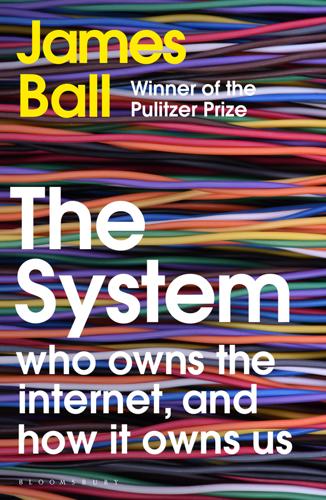
The System: Who Owns the Internet, and How It Owns Us
by
James Ball
Published 19 Aug 2020
v=XEVlyP4_11M 8Optic Nerve was first disclosed in a 2014 Snowden story, reported with Spencer Ackerman: https://www.theguardian.com/world/2014/feb/27/gchq-nsa-webcam-images-internet-yahoo 9https://www.ft.com/content/93fe2e28-d83c-11e2-b4a4-00144feab7de 10https://www.propublica.org/article/claim-on-attacks-thwarted-by-nsa-spreads-despite-lack-of-evidence 11https://www.npr.org/2018/12/28/677414459/in-chinas-push-for-high-tech-hackers-target-cutting-edge-u-s-firms?t=1550197762515 12To learn more about Stuxnet, and the massive cyber-programme it was part of, the best source is Alex Gibney’s documentary Zero Days. I reported some of its revelations, with independent corroboration, here: https://www.buzzfeednews.com/article/jamesball/us-hacked-into-irans-critical-civilian-infrastructure-for-ma 13https://www.thebureauinvestigates.com/stories/2018-09-13/bureau-wins-case-to-defend-press-freedom-at-the-european-court-of-human-rights 14https://www.theguardian.com/world/2013/oct/24/nsa-surveillance-world-leaders-calls 15As with other stories, they did agree to redact certain specific details (for example, particular models of software, or company names, when specific reasons were given). 16The Guardian version of this story can be viewed here: https://www.theguardian.com/world/2013/sep/05/nsa-gchq-encryption-codes-security 17This was helpfully tweeted by the BBC’s technology editor, Rory Cellan-Jones: https://twitter.com/ruskin147/status/1096327971131088896/photo/1 18The following account of WannaCry is based on interviews with the Symantec staff in the chapter, my own reporting from the time (https://www.buzzfeed.com/jamesball/heres-why-its-unlikely-the-nhs-was-deliberately-targeted-in, https://www.buzzfeed.com/jamesball/gchq-is-facing-questions-over-last-weeks-ransomware-attack, https://www.buzzfeed.com/jamesball/a-highly-critical-report-says-the-nhs-was-hit-by-the), and some details from this later Washington Post report: https://www.washingtonpost.com/world/national-security/us-set-to-declare-north-korea-carried-out-massive-wannacry-cyber-attack/2017/12/18/509deb1c-e446-11e7-a65d-1ac0fd7f097e_story.html?

Immortality, Inc.
by
Chip Walter
Published 7 Jan 2020
What is the one thing none of us can control? Time, right? At your age, if all goes well, maybe you’ll live another 30 years? That’s 365 x 30, so let’s say 10,000 days.” (That got Doerr’s attention. The idea of days somehow didn’t seem to feel as far away as years.) But wait, it could be worse: What about zero days? Maris told the story of his father’s brain cancer diagnosis. His father asked the doctor how much time he had. The doctor said he never made those predictions anymore, because one time he told a cancer patient that he only had six months to live: 180 days. Well, the man thought, at least I have time to get my affairs in order.

DarkMarket: Cyberthieves, Cybercops and You
by
Misha Glenny
Published 3 Oct 2011
For a broader introduction into some of the challenges emerging as a consequence of Internet technology, Jonathan Zittrain’s The Future of the Internet: And How to Stop It should be the first port of call. Other blogs of real value include Krebsonsecurity by Brian Krebs; Bruce Schneier’s newsletter, Crypto-gram; the blog of F-Secure, the Finnish Computer Security company; and, finally, Dancho Danchev and Ryan Naraine’s Zero Day blog on Znet. ACKNOWLEDGEMENTS Writing this book presented many challenges which I could never have met had it not been for the generous assistance I received from a number of friends and colleagues around the world. In Britain, two people played a vital role. Leonida Krushelnycky has proved to be an indefatigable researcher, often uncovering vital material long after I had given up any hope of finding it.

The New Rules of War: Victory in the Age of Durable Disorder
by
Sean McFate
Published 22 Jan 2019
On varmint threat, see: Cyber Squirrel 1, 31 January 2018, http://cybersquirrel1.com. 9. Stuxnet hype: Michael Joseph Gross, “A Declaration of Cyber-War,” Vanity Fair, 21 March 2011, www.vanityfair.com/news/2011/03/stuxnet-201104; Kim Zetter, “An Unprecedented Look at Stuxnet, the World’s First Digital Weapon,” Wired, 3 November 2014, www.wired.com/2014/11/countdown-to-zero-day-stuxnet. 10. Billy Mitchell predicts age of air power: William Mitchell, Winged Defense: The Development and Possibilities of Modern Air Power—Economic and Military (New York: G. P. Putnam’s Sons, 1924), 25–26. 11. Billy Mitchell predicts Pearl Harbor: “Billy Mitchell’s Prophecy,” American Heritage 13, no. 2 (February 1962): www.americanheritage.com/content/billy-mitchell’s-prophecy. 12.

The Autonomous Revolution: Reclaiming the Future We’ve Sold to Machines
by
William Davidow
and
Michael Malone
Published 18 Feb 2020
“Robert Tappan Morris,” Wikipedia, https://en.wikipedia.org/wiki/Robert_Tappan_Morris (accessed June 27, 2019); and “Computer Fraud and Abuse Act,” Wikipedia, https://en.wikipedia.org/wiki/Computer_Fraud_and_Abuse_Act (accessed June 27, 2019). 43. Kim Zetter, “An Unprecedented Look at Stuxnet, the World’s First Digital Weapon,” Wired, November 3, 2014, https://www.wired.com/2014/11/countdown-to-zero-day-stuxnet/ (accessed June 28, 2019). 44. Gordon Corera, “21st Century Warfare,” BBC, http://www.bbc.co.uk/guides/zq9jmnb#ztq6nbk (accessed June 28, 2019). 45. Steve Morgan, “Cybercrime Damages $6 Trillion by 2021,” Cybersecurity Ventures, October 16, 2017, https://cybersecurityventures.com/hackerpocalypse-cybercrime-report-2016/ (accessed June 28, 2019). 46.

Going Dark: The Secret Social Lives of Extremists
by
Julia Ebner
Published 20 Feb 2020
Apart from learning these technical skills, he also recommends a range of infiltration and forgery techniques to get around security boundaries that cannot be solved with hacks alone: • Get jobs that fill roles that you might find useful to compromise people working within in the future. This means sysadmin stuff, helpdesk stuff, etc. Also, you can usually get into everything at a company just by being hired as a sysad. If you can talk your way into a systems role repeatedly, you don’t need zero-days,25 you can get given the keys to everything. • Getting a job as a skiptracer26 in the collections industry will give you access to datasets that will turbocharge your ability to dox individuals. • Become a more competent programmer by submitting git pull27 requests for fixes on outstanding bugs and desired features on well used open source products.

Confessions of a Bookseller
by
Shaun Bythell
Published 8 Aug 2019
Till Total £162.89 17 Customers WEDNESDAY, 8 APRIL Online orders: 6 Orders found: 5 One of the orders was for three books, one of which was brought in by the banana box man yesterday – Outrage, by Ian Nairn, an unusual book. Nairn was an architectural critic who coined the word ‘subtopia’. One person ordering three books online means that the total number of books that went out today was eight: total value £99. Unusually high for our online sales, but it compensates for the two zero days we’ve had in the past week. At 10 a.m. a young Italian woman came in to discuss life in a bookshop for an article she’s writing for a blog. While we were chatting about the hardships facing bookshops today, a customer was browsing and came to the counter with three books. The total was £23. He said ‘You’ll do them for £20, won’t you.’

Heart of the Machine: Our Future in a World of Artificial Emotional Intelligence
by
Richard Yonck
Published 7 Mar 2017
Its developers will certainly do what they can to make their work and devices user-friendly, but beyond this there will be the hackers, the entrepreneurs, the DIY innovators who will seek to unravel the mysteries of the technology and in doing so bestow far more of its awesome power upon anyone who wants it, including the technically unskilled. It sounds ridiculous, but this is exactly what we’ve seen in recent years as hackers have made what was once hard-won knowledge and skill available to all at very affordable prices. Distributed denial of service (DDOS) attacks, SQL injections, brute force password cracking, botnet services, and zero-day exploits are all hacking methods that once required sophisticated expertise to perform. Today anyone with money and an Internet connection can access the “Dark Web” and find these tools available for purchase—complete with user-friendly interfaces. Tomorrow’s world will find much more for sale, and emotional computing tools will most certainly be among them.

Messing With the Enemy: Surviving in a Social Media World of Hackers, Terrorists, Russians, and Fake News
by
Clint Watts
Published 28 May 2018
APTs, unlike common cybercriminals or hacker collectives, have sufficient resourcing to stay on their targets until they penetrate the systems they desire to access. APTs use a range of techniques, from the simple to the complex, employing all forms of social engineering and specifically tailored malware known as “zero days.” The Russian APTs were known in the cybersecurity world as APT28 (code name: Fancy Bear) and APT29 (Cozy Bear). Cozy and Fancy Bear represented competing Russian hacker groups seeking access and compromising information from democratically elected officials adversarial to Russia, media personalities (particularly reporters who interfaced with anonymous sources), military leaders, and academic researchers and policy think tanks studying Russia.
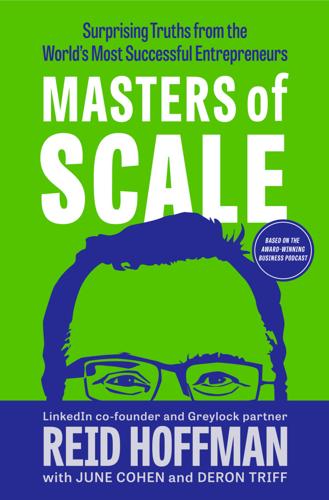
Masters of Scale: Surprising Truths From the World's Most Successful Entrepreneurs
by
Reid Hoffman
,
June Cohen
and
Deron Triff
Published 14 Oct 2021
“The customer experience of Rent the Runway is not the website or an app. That is easy,” Jenn says. “The customer experience is receiving back millions of units of worn clothing, capturing data on those units, restoring them to perfect condition, dry-cleaning them, repairing them, reassembling them with new units and shipping them out—often with a zero-day turnaround time.” Jenn hadn’t anticipated any of that process when the idea first came to her. “We’ve had to build all of our underlying logistics technology from scratch,” she says. “I really did think that we were going to be able to outsource part of our technology stack. I thought that we’d be able to outsource, potentially, our dry-cleaning at the very beginning.”

Halting State
by
Charles Stross
Published 9 Jul 2011
“The question isn’t where Team Red got the keys to the realm from: Hayek Associates have a copy of the one-time pad, because they’re sniffing on everything. The question is, Who inside Hayek Associates leaked the pad, via the blacknet? Barry’s gotten through to the disaster planning people. They’ve generated fresh master pads, and they’re pushing copies out to the main switches by courier—they’re implementing the national zero-day exploit plan. The goal is to throw the switch at noon, at which point all Team Red’s careful work goes down the toilet. Then they’ll reboot CopSpace completely and load freshly signed certificates for the dot-sco domain by hand on the root servers, and a bunch more fiddly stuff. But the main thing is, once they change the one-time pads for admin access to the national backbone routers, Team Red will be unable to tap traffic at will.

Permanent Record
by
Edward Snowden
Published 16 Sep 2019
Yet even given that knowledge, I still struggle to accept the sheer magnitude and speed of the change, from an America that sought to define itself by a calculated and performative respect for dissent to a security state whose militarized police demand obedience, drawing their guns and issuing the order for total submission now heard in every city: “Stop resisting.” This is why whenever I try to understand how the last two decades happened, I return to that September—to that ground-zero day and its immediate aftermath. To return to that fall means coming up against a truth darker than the lies that tied the Taliban to al-Qaeda and conjured up Saddam Hussein’s illusory stockpile of WMDs. It means, ultimately, confronting the fact that the carnage and abuses that marked my young adulthood were born not only in the executive branch and the intelligence agencies, but also in the hearts and minds of all Americans, myself included.

Blood and Oil: Mohammed Bin Salman's Ruthless Quest for Global Power
by
Bradley Hope
and
Justin Scheck
Published 14 Sep 2020
It only sold the system to governments that it deemed would use it for acceptable purposes and required Israeli government permission for each sale. Qatar was denied access, while the UAE purchased not one but three $50 million annual subscriptions for different intelligence-related organizations in its government. The high cost came down to NSO’s use of “zero-day” exploits, a term for loopholes in widely used software that even big companies like Microsoft, Google, and Apple don’t know about. Its researchers work to find those holes and create programs that exploit them to gain control of or access to devices. The only problem with providing such a powerful tool to other governments, including authoritarian monarchies, is their extremely limited oversight.

The Millionaire Fastlane: Crack the Code to Wealth and Live Rich for a Lifetime
by
Mj Demarco
Published 8 Nov 2010
While I worked my plan, I gave 7-for-0 (I worked seven days and didn't take a day off) because I knew the roads on my roadmap converged with dreams. I worked for a better ratio in the near future, not in 40 years. I controlled my destiny and eventually my time trade investment yielded a dividend of 40 years. Now I do 0-for-7. I work zero days and get seven days of freedom. Sadly, if you are entrenched in the Slowlane, your options to shatter this negative 60% return for your freedom is restricted. Remember, wealth is defined by freedom, and if you require proof, look no further than Friday night when people celebrate freedom as the Slowlane dictatorship takes a weekend furlough.

New Laws of Robotics: Defending Human Expertise in the Age of AI
by
Frank Pasquale
Published 14 May 2020
Complaints about privacy violations and excess regimentation are rife. “Virtual charter schools” have taught at least three hundred thousand students in the United States, promising online content for home schoolers. But the track record of many is extraordinarily poor.74 In some instances, 180 days of “learning” at cyber-charters was equivalent to zero days in a regular classroom—in other words, there was no educational attainment whatsoever. Similarly, many online postsecondary institutions are dogged by poor job placement rates, spotty instruction, and, at worst, lawsuits accusing them of simply being scams. As Audrey Watters explains, these failures should not be a surprise.

The Coming Wave: Technology, Power, and the Twenty-First Century's Greatest Dilemma
by
Mustafa Suleyman
Published 4 Sep 2023
The more this is done publicly and collectively, the better, enabling all developers to learn from one another. Again, it’s high time that all big tech companies proactively collaborate here, quickly sharing insights about novel risks, just like the cybersecurity industry has long shared knowledge of new zero-day attacks. It’s also time to create government-funded red teams that would rigorously attack and stress test every system, ensuring that insights discovered along the way are shared widely across the industry. Eventually, this work could be scaled and automated, with publicly mandated AI systems designed specifically to audit and spot problems in others, while also allowing themselves to be audited.

The Nature of Software Development: Keep It Simple, Make It Valuable, Build It Piece by Piece
by
Ron Jeffries
Published 14 Aug 2015
Once you know that vulnerability exists, it should just be a matter of updating to a patched version and redeploying. But who keeps track of the patch level of all their dependencies? Most developers don’t even know what all is in their dependency tree. Sadly, most successful attacks are not the exciting “zero day, rush to patch before they get it” kind of thing that makes those cringe-worthy scenes in big budget thrillers. Most attacks are mundane. A workbench-style tool probes IP addresses for hundreds of vulnerabilities, some of them truly ancient. The attacker may just collect an inventory of targets and weaknesses, or they may run automated exploits to add the machine to a growing collection of compromised minions.

Machine, Platform, Crowd: Harnessing Our Digital Future
by
Andrew McAfee
and
Erik Brynjolfsson
Published 26 Jun 2017
Patrick Byrne, CEO of online retailer Overstock.com, has been a blockchain advocate since the early days of Bitcoin. Overstock became the first major e-commerce store to accept the digital currency, in September 2014. Byrne went on to create a subsidiary, TØ.com, that uses blockchain to track the exchange of financial assets. The name comes from the fact that trades on the platform settle in zero days as opposed to three days later (T+3), which is the norm on Wall Street. Overstock used TØ.com to offer $25 million in corporate bonds in June of 2015. In March of 2016 it announced it was making a public offering of preferred stock, utilizing blockchain. Both of these were world firsts. In October of 2015, Nasdaq launched Linq, a solution enabling private companies to digitally record share ownership using blockchain technology.
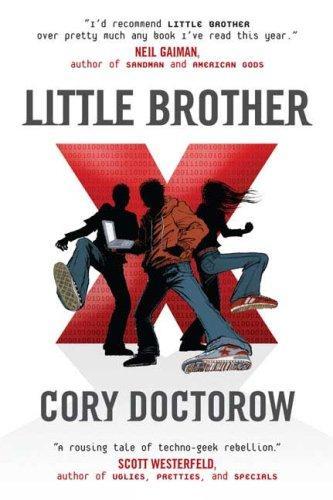
Little Brother
by
Cory Doctorow
Published 29 Apr 2008
There are hundreds of people working for the DHS on Xnet right now. I have their names, handles and keys. Private and public. > Within days of the Xnet launch, we went to work on exploiting ParanoidLinux. The exploits so far have been small and insubstantial, but a break is inevitable. Once we have a zero-day break, you're dead. > I think it's safe to say that if my handlers knew that I was typing this, my ass would be stuck in Gitmo-by-the-Bay until I was an old woman. > Even if they don't break ParanoidLinux, there are poisoned ParanoidXbox distros floating around. They don't match the checksums, but how many people look at the checksums?
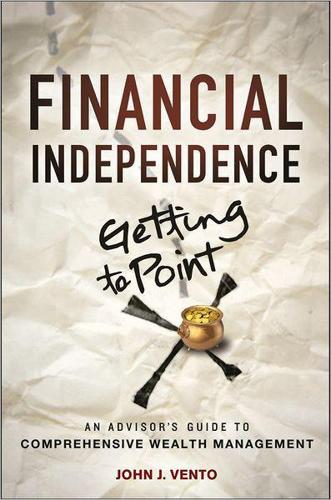
Financial Independence
by
John J. Vento
Published 31 Mar 2013
That means benefits can start 0, 20, 30, 60, 90, or 100 days after you start using long-term care or become disabled. How many days you have to wait for benefits to start will depend on the elimination period you pick when you buy your policy. You might be c05.indd 117 26/02/13 11:09 AM 118 Financial Independence (Getting to Point X ) able to choose a policy with a zero-day elimination period but expect it to cost significantly more. Protecting against inflation can be one of the most important additions you can make to a long-term care insurance policy, although it will increase the premium you pay. If your benefits do not increase over time, years from now, you may find that they have not kept up with the rising cost of long-term care.

CTOs at Work
by
Scott Donaldson
,
Stanley Siegel
and
Gary Donaldson
Published 13 Jan 2012
There are some open source applications to manage big data, and some very well-known large companies are starting to support those standards. S. Donaldson: How about cyber security? Cherches: Cyber security—well, that's a big subject. I always talk about one day walking into the office and everything is wiped out. A new, unknown threat, often called zero-day attack, may come out and computers will be wiped out. So, you need to have a good data recovery strategy in cyber security. Hire a good expert. Hire a company that can do penetration testing for you and can just come from outside and the inside and then report you their concerns. S. Donaldson: How do you handle technology investments for your own company?

Construction Project Management
by
S. Keoki Sears
Published 7 Feb 2015
These changes may serve to improve the overall situation or may only further complicate it. In the case of the 10 laborers needed on working day 6, Chart 5.3a on the companion website shows that activity 80 has 19 days of total float and 19 days of free float. Activity 90 has 12 days of total float and zero days of free float. This labor conflict can be remedied easily by moving either activity 80 or 90 to a later date; movement of activity 80 is preferable. 8.9 Heuristic Manpower Leveling A number of operations research techniques are available for obtaining optimal solutions to manpower leveling problems.
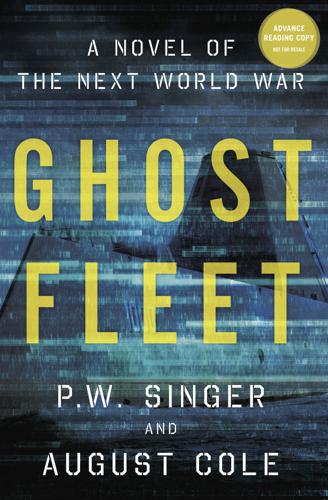
Ghost Fleet: A Novel of the Next World War
by
P. W. Singer
and
August Cole
Published 28 Jun 2015
We ended up having to do a top-to-bottom overhaul here,” said Simmons. As they approached a knot of crewmen — some in their teens, others decades older — clambering over a scaffold, the admiral said, “Tell me about the crew. How is the new mix going?” “The mix of generations has its strengths and weaknesses. We have the remnants of the pre–Zero Day fleet. I was given my choice of the best of my old crew, which I understand I have you to thank for. Then there are the draftees, some of whom have never seen the real ocean, let alone been out on it,” said Simmons. “But what they do know are computers; they’ve been with viz in one form or another since birth.

Connectography: Mapping the Future of Global Civilization
by
Parag Khanna
Published 18 Apr 2016
The Twilight of Sovereignty: How the Information Revolution Is Transforming Our World. Scribner, 1992. Zakaria, Fareed. The Future of Freedom: Illiberal Democracy at Home and Abroad. W. W. Norton, 2007. Zeihan, Peter. The Accidental Superpower: The Next Generation of American Preeminence and the Coming Global Disorder. Twelve, 2015. Zetter, Kim. Countdown to Zero Day: Stuxnet and the Launch of the World’s First Digital Weapon. Penguin Random House, 2014. Zhang Weiwei. The China Wave: Rise of a Civilizational State. World Century, 2012. Zheng, Y. De Facto Federalism in China: Reforms and Dynamics of Central-Local Relations. World Scientific, 2007. ———. “Institutional Economics and Central-Local Relations in China: Evolving Research.”
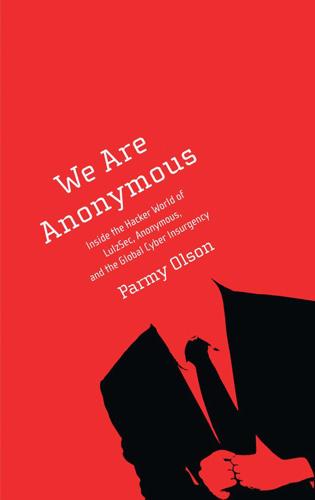
We Are Anonymous: Inside the Hacker World of LulzSec, Anonymous, and the Global Cyber Insurgency
by
Parmy Olson
Published 5 Jun 2012
Then he added, “Kayla.” Joepie reported all of this verbatim back to the crew in #pure-elite. Those nicknames were very well known, pointed out a secondary-crew member called Trollpoll. Another laughed. “He’s just name dropping,” said Sabu. Neuron, a friendly and analytical Anon, suggested asking Egeste to provide a zero-day as proof of his skills. Also known as a 0day, this referred to an as-yet-unknown server vulnerability, and finding one meant big kudos for any hacker, white hat or black hat. Sabu asked Kayla if she’d heard of Egeste, and it turned out the new guy had also been in the #Gnosis channel when she had coordinated the hack on Gawker, but “he did not do shit,” she said.
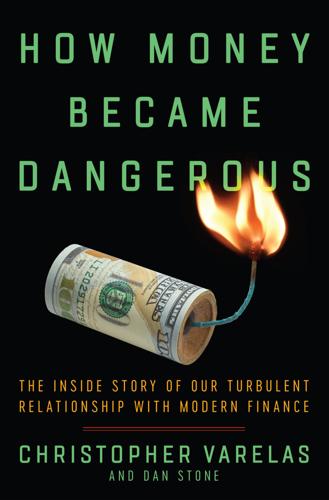
How Money Became Dangerous
by
Christopher Varelas
Published 15 Oct 2019
For example, when other diamond wholesalers closed a deal, they would typically be paid within six months, but it was different with Barry. His accounts would be settled immediately. “People pay me.” That’s the only answer he gave when I asked him about it. “But, Barry, the industry average is 180 days, and yours is close to zero days.” “People pay me.” I was beginning to understand the value of a tough reputation in the diamond industry, but despite Barry’s intimidating personality, it didn’t take long to recognize that he was good to his core, a man who had built his reputation through honesty and integrity. Over time, he became someone I could call for advice about any loan I was considering making.
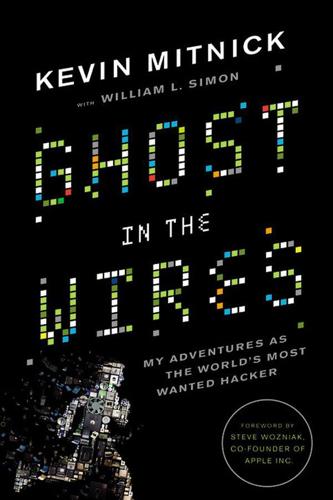
Ghost in the Wires: My Adventures as the World's Most Wanted Hacker
by
Kevin Mitnick
Published 14 Aug 2011
I was shocked but happy to share the spoils with him. As a team, we hacked into the workstations of several other CERT staff members and grabbed everyone’s email spools, meaning all their email messages. And we hit the mother lode, because many of those emails contained unencrypted messages disclosing so-called zero-day vulnerabilities—meaning that they had just been discovered, and the software manufacturers had not yet developed or distributed patches to fix the problems. When RGB and I found that most bugs were sent “in the clear”—unencrypted—we could hardly contain ourselves. As I said, that had all happened a couple of years earlier.
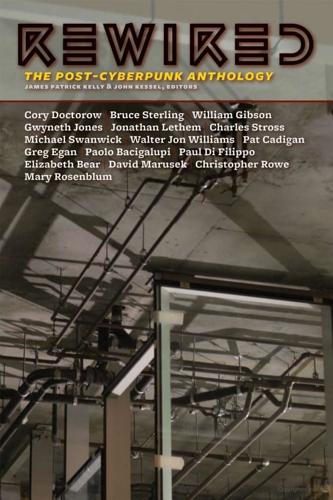
Rewired: The Post-Cyberpunk Anthology
by
James Patrick Kelly
and
John Kessel
Published 30 Sep 2007
It went down around 1:30 and I got woken up by my process-monitor. I should have called you and told you I was coming down—spared you the trip.” Felix’s own server — a box he shared with five other friends — was in a rack one floor down. He wondered if it was offline too. “What’s the story?” “Massive flashworm attack. Some jackass with a zero-day exploit has got every Windows box on the net running Monte Carlo probes on every IP block, including IPv6. The big Ciscos all run administrative interfaces over v6, and they all fall over if they get more than ten simultaneous probes, which means that just about every interchange has gone down. DNS is screwy, too—like maybe someone poisoned the zone transfer last night.

Area 51: An Uncensored History of America's Top Secret Military Base
by
Annie Jacobsen
Published 16 May 2011
An accidental detonation of a nuclear weapon in an urban area would be far more catastrophic than one in a remote desert area such as Groom Lake, and the Department of Defense wanted to test how city surfaces would respond to plutonium contamination, so mock-ups of sidewalks, curbs, and pavement pieces were set out in the desert landscape. Some fourteen hundred blocks of highway asphalt and wood float finish concrete were fabricated and set around on the ground. To see how automobiles would contaminate when exposed to plutonium, cars and trucks were parked among the juniper bushes and Joshua trees. As zero day got closer, Mingus saw preparations pick up. Giant air-sampling balloons were tethered to the earth and floated over Area 13 at various elevations; some were five feet off the ground and others a thousand feet up, giving things a circus feel. Nine burros, 109 beagles, 10 sheep, and 31 albino rats were put in cages and set to face the dirty bomb.

Seeking SRE: Conversations About Running Production Systems at Scale
by
David N. Blank-Edelman
Published 16 Sep 2018
Rather than developing the same antibot or DDoS mitigation tooling in each application, you can use scriptable load balancers to build a layer of protection against these threats and use them on all web-exposed services.13 Cloudflare has built a business providing such a layer with its web application firewall functionality. Any service behind its middleware gains the same benefits of protection against Open Web Application Security Project (OWASP) vulnerabilities, common DoS vectors, and zero-day exploits. When the danger or authenticity of a request is ambiguous, the middleware is able to redirect to a challenge-response test to validate that the request comes from a legitimate source. Whereas previously protection against attacks below the application layer would require making a decision based on the scope of a single packet, scriptable load balancers allow you to make decisions after analyzing the entire transaction.
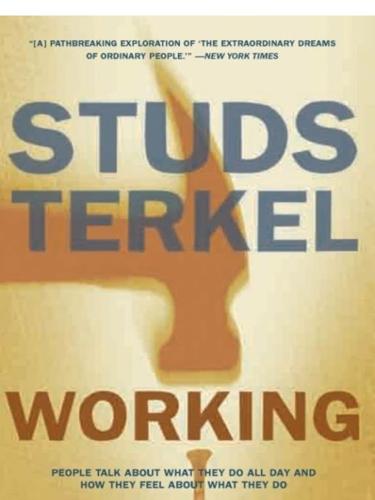
Working: People Talk About What They Do All Day and How They Feel About What They Do
by
Studs Terkel
Published 1 Jan 1974
It has never bothered me. I have a real bad back, by the way. I’ve been in the hospital last year with a bad back. Shoveling coal and mopping is bad. If you have a lot of mopping, you’re throwing your hips around. I tire out very easy because of my back. But I’m better in my job now. A janitor on zero days, when the wind is blowin’ and he has to go up those stairs in ice cold weather—a lot of janitors are up in age. You’re talking about men fifty years old, fifty-five, up into there. He has to clean those porches off, he has to shovel the snow, and the ticker only takes so much. Now I have a jeep.
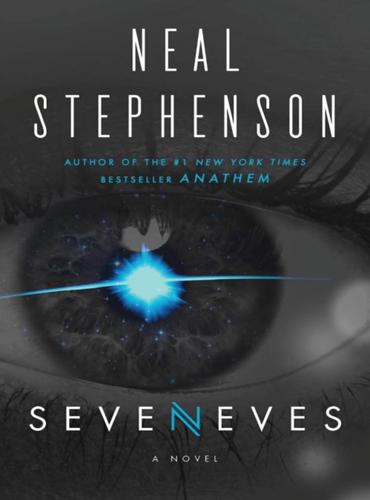
Seveneves
by
Neal Stephenson
Published 19 May 2015
New arrivals tended to expect that anything placed elsewhere on the table would roll and slide down toward them. The walls were pale yellow. The usual collection of malfunctioning audiovisual equipment purported to show live video streams of people on the ground, in theory enabling them to teleconference with colleagues in Houston, Baikonur, or Washington. When the meeting began at A+0.0.4 (zero years, zero days, and four hours since the Agent had acted upon the moon), nothing was working, and so the occupants of Izzy had a few minutes to talk among themselves while Frank Casper and Jibran Haroun wiggled connectors, typed commands into computers, and rebooted everything. Relatively new arrivals to Izzy, Frank and Jibran had made the mistake of letting on that they were good at that sort of thing, so they always got saddled with it.